The Fundamentals of Roasting Pumpkins, Squash, & Other Gourds
When we think about roasting pumpkins, squash, and other gourds, we tend to think about roasting pie pumpkin. After all, every fall season we're inundated with dreams of pumpkin pie, pumpkin bread, and pumpkin pie lattes! While most coffee drinks contain no actual pumpkin and are artificially flavored, everything else requires pumpkin purée! Pie pumpkins are by no means the only thing to purée, though. There are plenty of other gourds to roast. And how to roast pumpkins, squash, and various gourds for purée is a staple that every home cook can master.
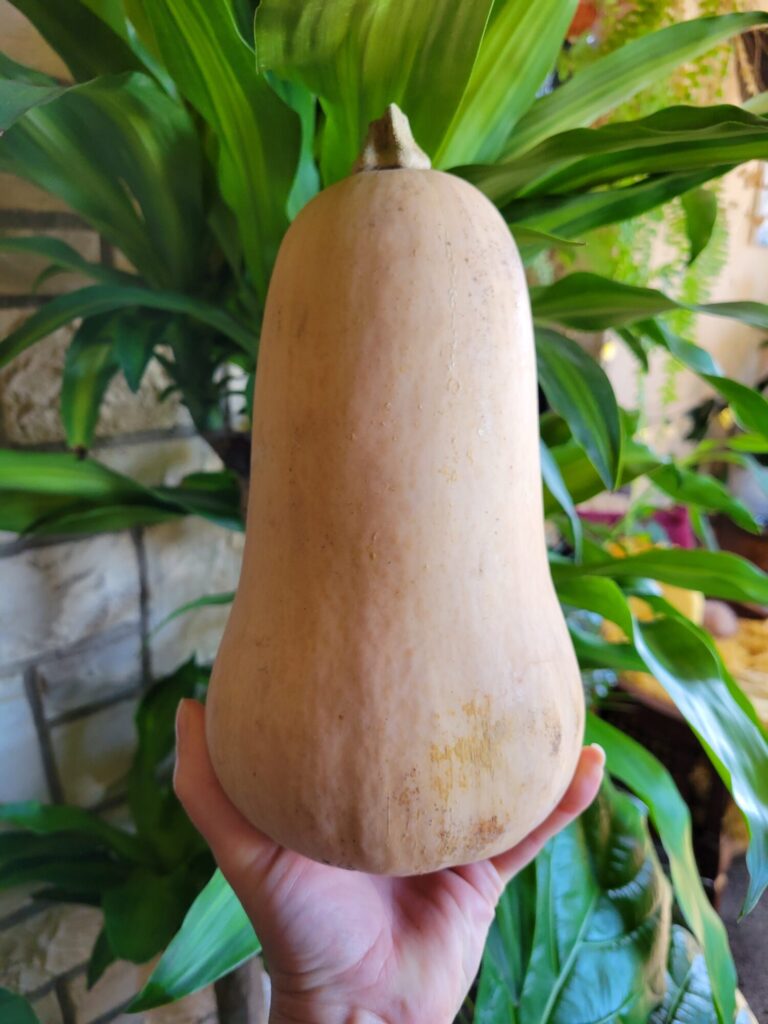
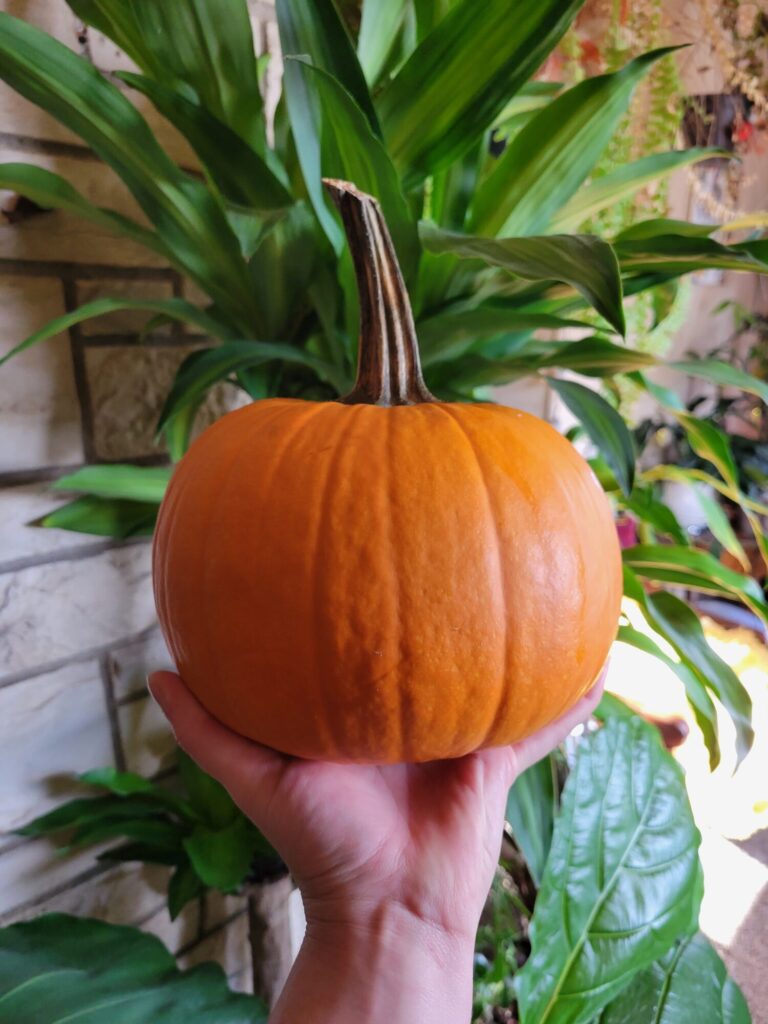
What's the Difference Between Pumpkins, Squash, and Gourds?
When thinking about roasting pumpkins, squash, and other gourds for purée, my favorites are pie pumpkins and butternut squash. There are a plethora of other fruits in the gourd family that are great for roasting. I recently cracked into an absolutely enormous Calabaza and it's officially my new favorite thing to roast!
I want to start this by making a distinction between squash, pumpkins, and gourds. After all, this sounds doable!
Pie pumpkin are small, round pumpkins used for baking. They're similar to carving pumpkins and jack-o-lanterns, but much more palatable!
Squash tend to come in two varieties: summer (yellow crookneck, zucchini) and winter (butternut, acorn). Winter is more typically used for roasting, with a hard inedible shell. While summer is softer and often found in salads and stir fries.
And gourds are those small, ornamental variations that we put out at Thanksgiving and the larger, hard-shelled gourds used to make utensils and rattles.
This isn't quite as easy as it sounds, though!
Did You Just Say Fruit?
For starters: Yes. Yes, I said fruit! Pumpkins, squash, and gourds are all fruit. We like to call them a vegetable, but this is technically incorrect. Fruit develops from the flowering part of the plant and contain seeds. Apples, pears, peppers, tomatoes, zucchini, and squash are all fruit.
Vegetables are every other part of the plant. Although this is often broken up into subcategories, including the flower itself (artichokes, broccoli), bulbs (onions, garlic), leaves (herbs, lettuce), stems (celery, rhubarb), roots (carrots, potatoes), seeds (i.e. chia, quinoa), and even the bark of some plants is edible (yellow birch, red spruce).
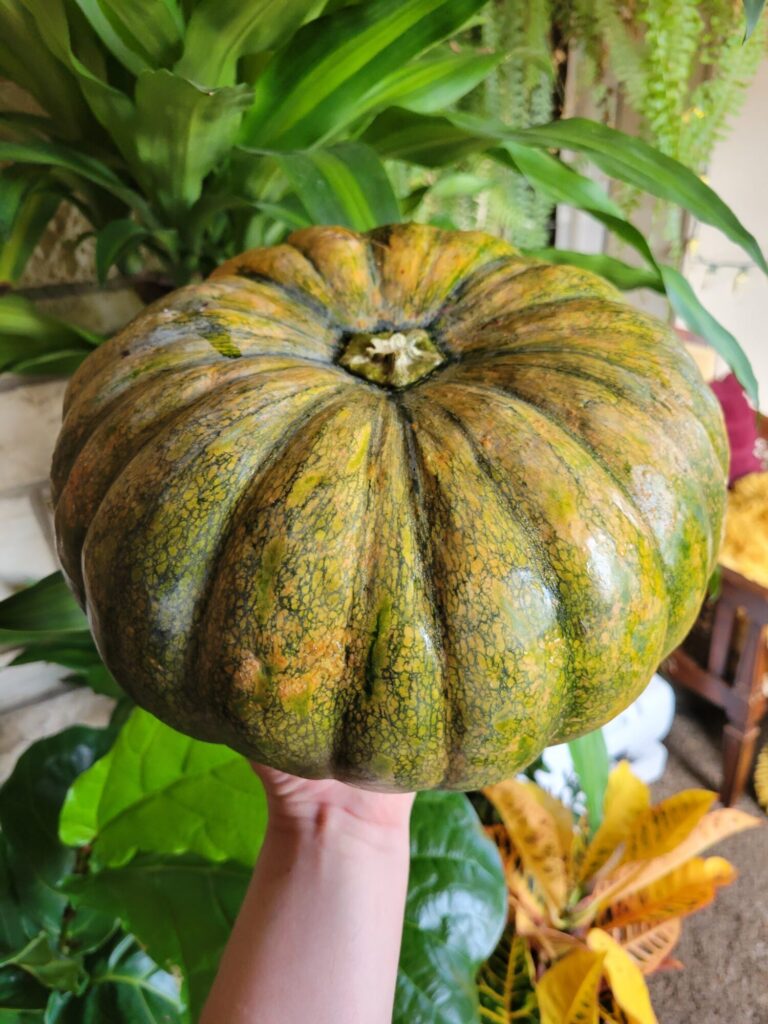
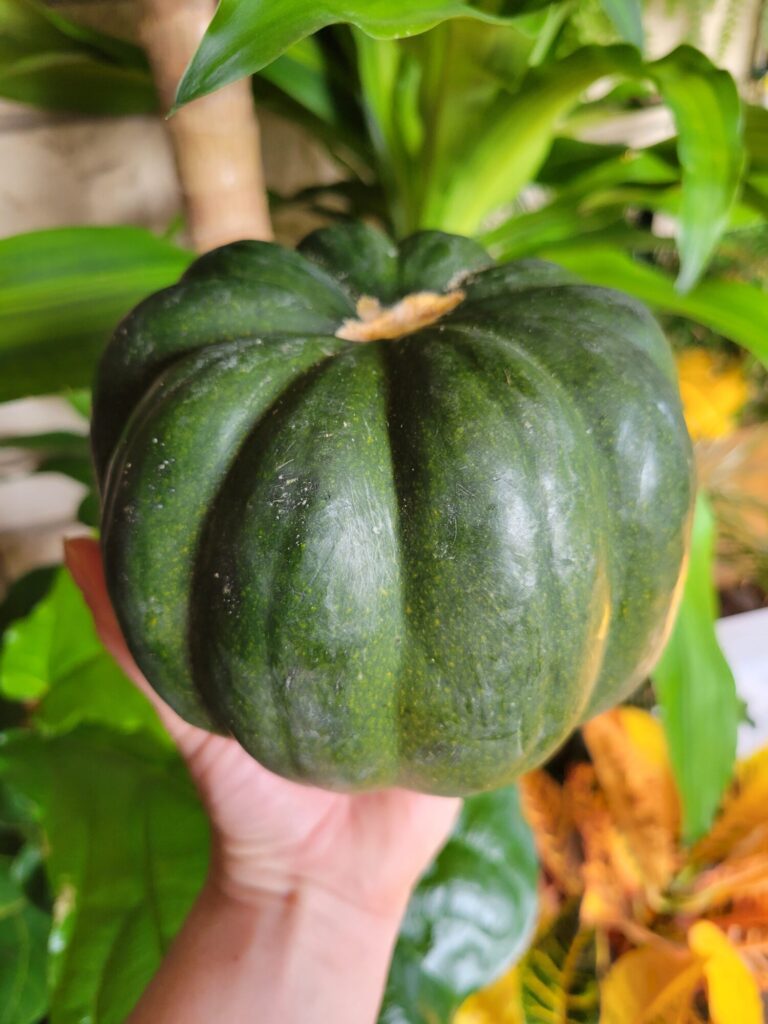
What Exactly ARE Pumpkins?
Part of the reason for this is that "pumpkin," "squash," and "gourd" aren't actually technical classifications.
"Pumpkin" is more of a colloquialism used to describe round, orange squash. They have no scientific definition or distinction from squash, though. This is why you often see the term "squash" and "pumpkin" used interchangeably, especially around the globe. What might be called a "pumpkin" in one country, might be translated to a "squash" in another.
What Are Squash?
A good example of this pumpkin vs. squash dilemma is the calabaza. What we call "calabaza" is an edible gourd that's about the size of a very heavy carving pumpkin and looks like something that Cinderella would use as a carriage. While it's a specific variety typically grown for roasting, "calabaza" is also the Spanish word for "pumpkin."
So, you can see where this starts to get confusing! Calabaza is a squash that looks like a carving pumpkin, is roasted like a pie pumpkin, and tastes like an enormous butternut squash.
So, what is it? Is it a squash? A pumpkin? Some general variation of gourd??
What Are Gourds?
All pumpkins are squash, but not all squash are pumpkins. Both pumpkins and squash are gourds, but the term "gourd" is used both for specific varieties of ornamental gourds as well as the parent category of the cucumber family. And "pumpkin" is really more of a colloquial term than an actual classification.
Gourds is a generic term used to vaguely describe different types of fruits that are in the cucumber family. The terminology isn't standardized across variety, let alone across country or around the globe, though. So, when you call something a "pumpkin" or a "squash" or a "gourd," that really doesn't mean anything according to taxonomy if you're just using the term colloquially.
Now, why did we go down this botanical rabbit hole? Because classification gets a little complicated. And it's not about to get any easier! So bear with me for a second while we both get through this.
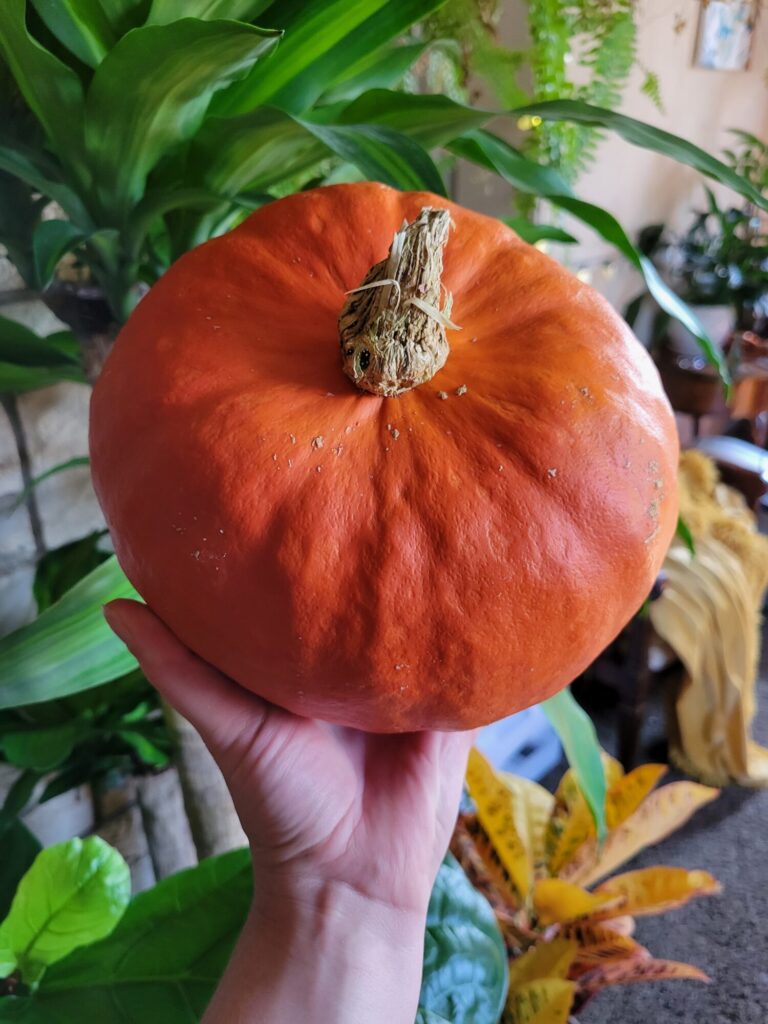
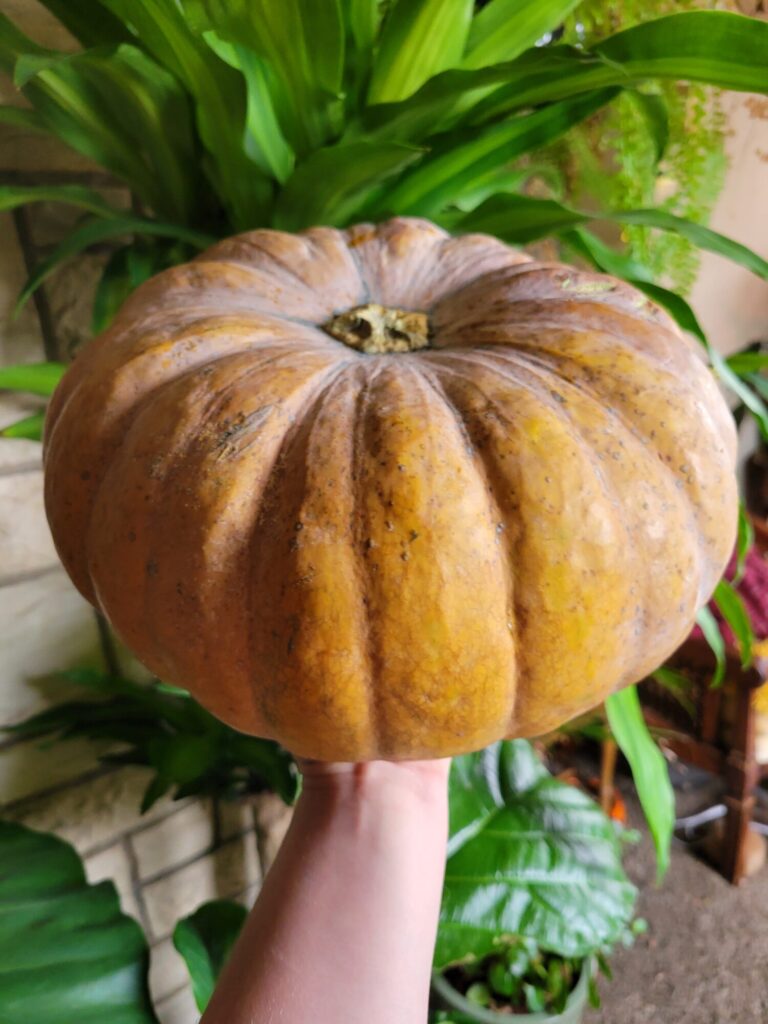
Down the Taxonomy Rabbit Hole
I predominantly roast butternut squash and pie pumpkins. But inedible decorative gourds, jack-o-lanterns, acorn squash, and pie pumpkins are more related to one another than any of them are related to butternut squash.
When you're talking about a typical "gourd," "pumpkin," and "squash," though, you're likely all talking about varieties of the Cucurbita pepo L. (Field Pumpkin). These might look, taste, and be called different things. But they're all the same species of the larger gourd family and are about as different as Chihuahuas are to Great Danes. They might be different sizes, shapes, and temperaments, but are all the same species and can breed together. We often don't think of this as being something that squash, pumpkins, and gourds can do. But this is actually the case!
This is because, when we're talking about pumpkins, we're typically referring to the Cucurbita pepo, Cucurbita moschata, and Cucurbita maxima plants. These are of the Cucurbita genus of the Cucurbitaceae family.
graph TD A["Kingdom (6)"]-->B["Subkingdom (1)"] B-->C["Superdivision (1)"] C-->D["Division (5)"] D-->E["Class (2)"] E-->F["Subclass (6)"] F-->G["Order (13)"] G-->H["Family (13)"] H-->I["Genus (34)"] I-->J["Species (9)"] J-->K["Colloquial Variety"] P["Plantae (Plants)"] P-->R["Tracheobionta (Vascular Plants)"] R-->X["Spermatophyta (Seed Plants)"] X-->AG["Magnoliophyta (Flowering Plants)"] AG-->AI["Magnoliopsida (Dicotyledons)"] AI-->AL["Dilleniidae"] AL-->BB["Violales (Flowering Plant)"] BB-->BG["Cucurbitaceae (Cucumber Family)"] BG-->BV["Cucurbita Lundelliana (Gourd)"] BV-->CK["Cucurbita maxima Duchesne (Winter Squash)"] BV-->CM["C. moschata Duchesne (Crookneck Squash)"] BV-->CP["Cucurbita pepo Lundelliana (Field Pumpkin)"] CK-->CS["Red Kuri Squash"] CK-->CT["Hubbard Squash"] CK-->CU["Kabocha Squash"] CM-->CW["Butternut Squash"] CM-->CX["Calabaza Squash"] CP-->CY["Acorn Squash"] CP-->DA["Carving Pumpkin"] CP-->DD["Ornamental Gourd"] CP-->DF["Pie Pumpkin"] CP-->DH["Spaghetti Squash"] CP-->DJ["Yellow Straightneck Squash"] CP-->DL["Zucchini"] style A fill:#7dac2f style B fill:#7dac2f style C fill:#7dac2f style D fill:#7dac2f style E fill:#7dac2f style F fill:#7dac2f style G fill:#7dac2f style H fill:#7dac2f style I fill:#7dac2f style J fill:#7dac2f style K fill:#7dac2f style P fill:#cdcd10 style R fill:#cdcd10 style P fill:#cdcd10 style R fill:#cdcd10 style X fill:#cdcd10 style AG fill:#cdcd10 style AI fill:#cdcd10 style AL fill:#cdcd10 style BB fill:#cdcd10 style BG fill:#cdcd10 style BV fill:#cdcd10 style CK fill:#cdcd10 style CM fill:#cdcd10 style CP fill:#cdcd10 style CT fill:#cdcd10 style CW fill:#cdcd10 style CX fill:#cdcd10 style DF fill:#cdcd10 style CS fill:#cdcd10 style CT fill:#cdcd10 style CU fill:#cdcd10 style CW fill:#cdcd10 style CX fill:#cdcd10 style CY fill:#cdcd10 style DF fill:#cdcd10
Family Classification
The umbrella category for all of these is the Cucurbitaceae family. Cucurbitaceae is the gourd variety of flowering plants and includes 98 genera and about 975 species of food and ornamental plants (Britannica, Cucurbitaceae). Among these are pumpkins, squash, gourds, and even melons.
"Gourd" is the family name for the Genus of Cucurbita L. (Gourd), which is of the Family Cucurbitaceae (Cucumber Family). Although it is also the subsection of Ornamental Gourds of the Cucurbita pepo L. (Field Pumpkin) Species.
They can even all crossbreed, even with inedible decorative gourds. It's like Chihuahuas and Mastiffs. They look and seem nothing alike but are all dogs at the end of the day!
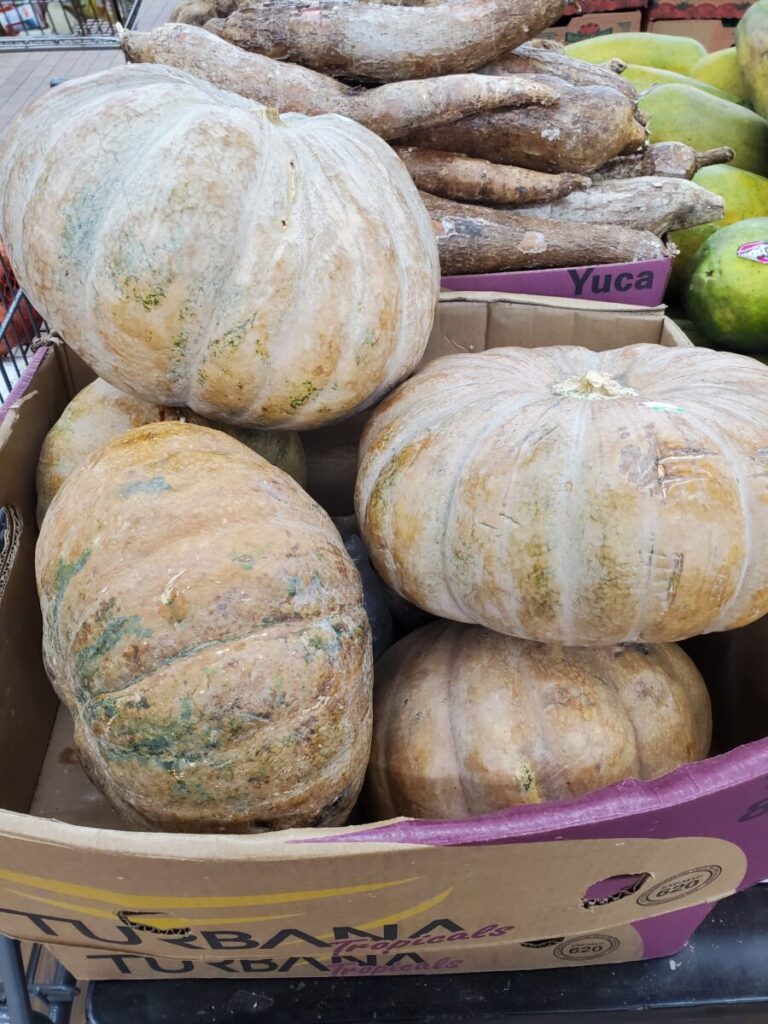
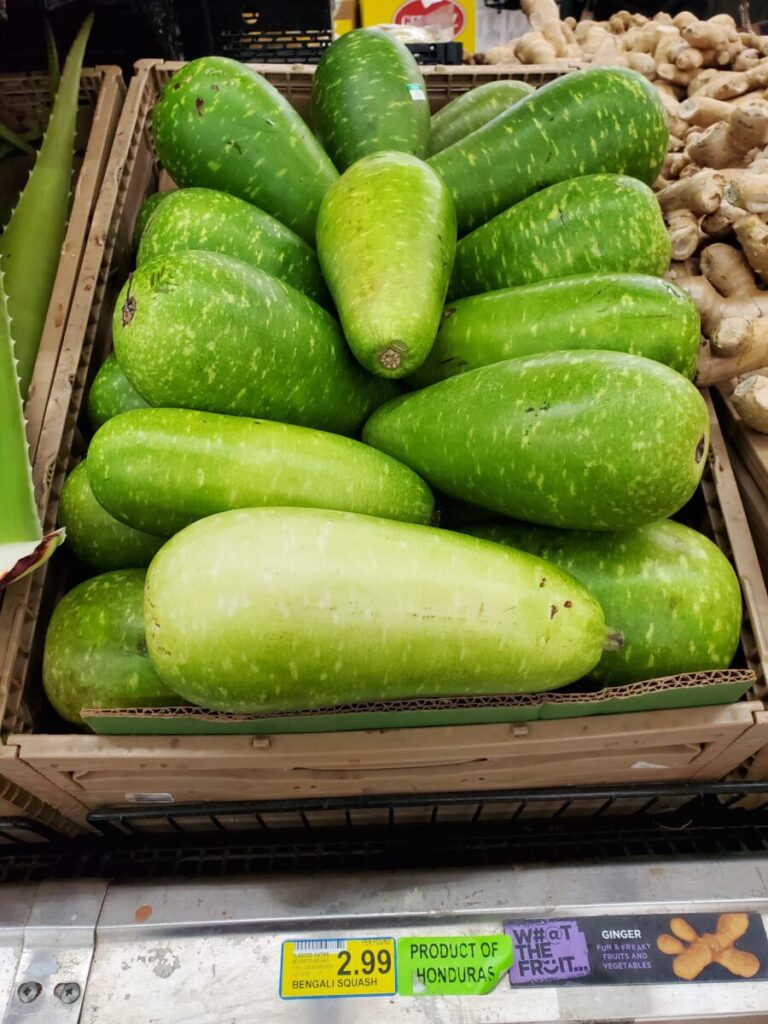
Choosing the Best Pumpkins, Squash, and Gourds for Roasting
Now for roasting pumpkins, squash, and gourds! Because that's actually what we're here for.
When you're standing in the grocery store or farmer's market staring at all of the pumpkins and squash, it can be difficult to figure out exactly which one to choose sometimes.
Pumpkins
For roasting pumpkins, the go-to is pie pumpkins. If you really wanted to, you could eat a carving pumpkin. They're technically edible and I always roast the seeds after making jack-o-lanterns! But these pumpkins are grown for size and not for taste. They're more bitter and don't have that sweetness that pumpkin is known for.
Your best option in the pumpkin category is the pie pumpkin. Other names for the exact same variety are sugar pumpkins, sweet pumpkins, and baking pumpkins.
Squash
For squash, the go-to is usually butternut squash. They have a sweet, nutty flavor with a rich, smooth consistency. Unlike some other squash, they're not particularly stringy and do well being puréed.
This is by no means the only squash that you can roast, though! I recently roasted a giant calabaza squash and I have to say that this takes the cake for best tasting roasted squash that I have ever had. They're more robust with a deeper flavor and color than butternut squash. Although I would generally recommend a smaller squash for roasting because they usually have less flavor, this is the exception.
These enormous squash, more typically in Indian or Filipino recipes, are largely heralded as the best squash for roasting and are often used in Asian cuisines as a substitute for butternut squash.
Gourds
Most gourds you probably don't want to eat. Squash, pumpkins, and gourds are all a part of the same family. While most gourds are technically edible, they are typically grown for ornamental purposes and you don't want to eat them. Gourds usually have a very small amount of flesh that's either relatively tasteless or bitter.
To clear up some confusion, pumpkins are technically a type of squash. Although not every squash would be considered a pumpkin, all pumpkins are squash.
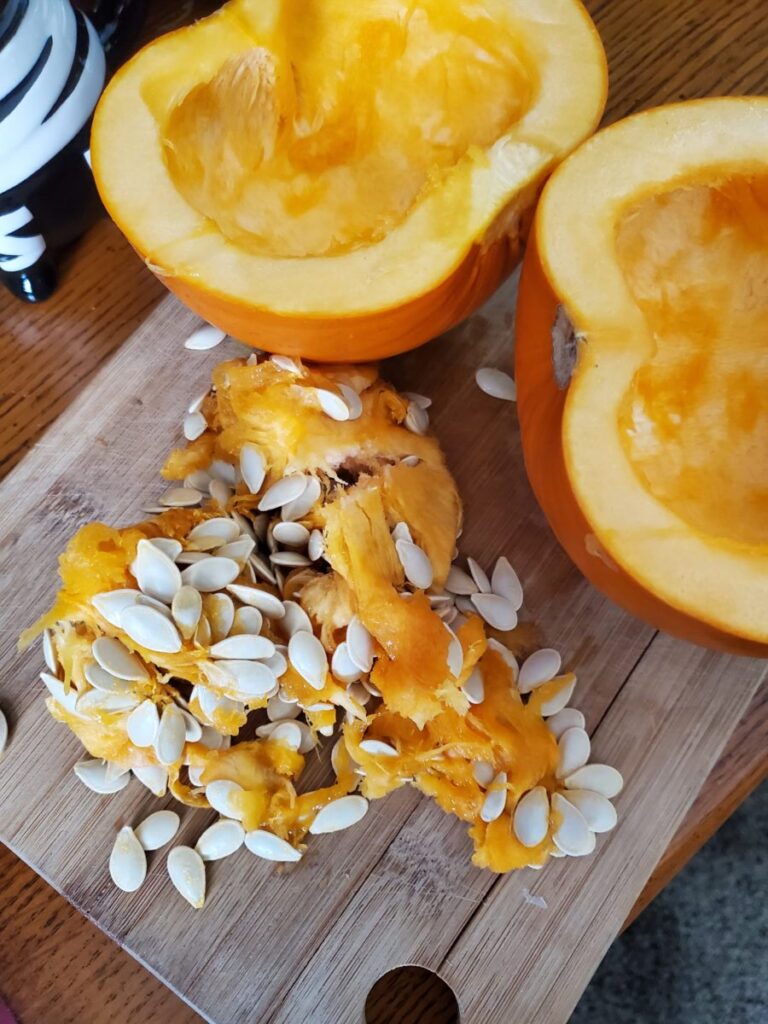
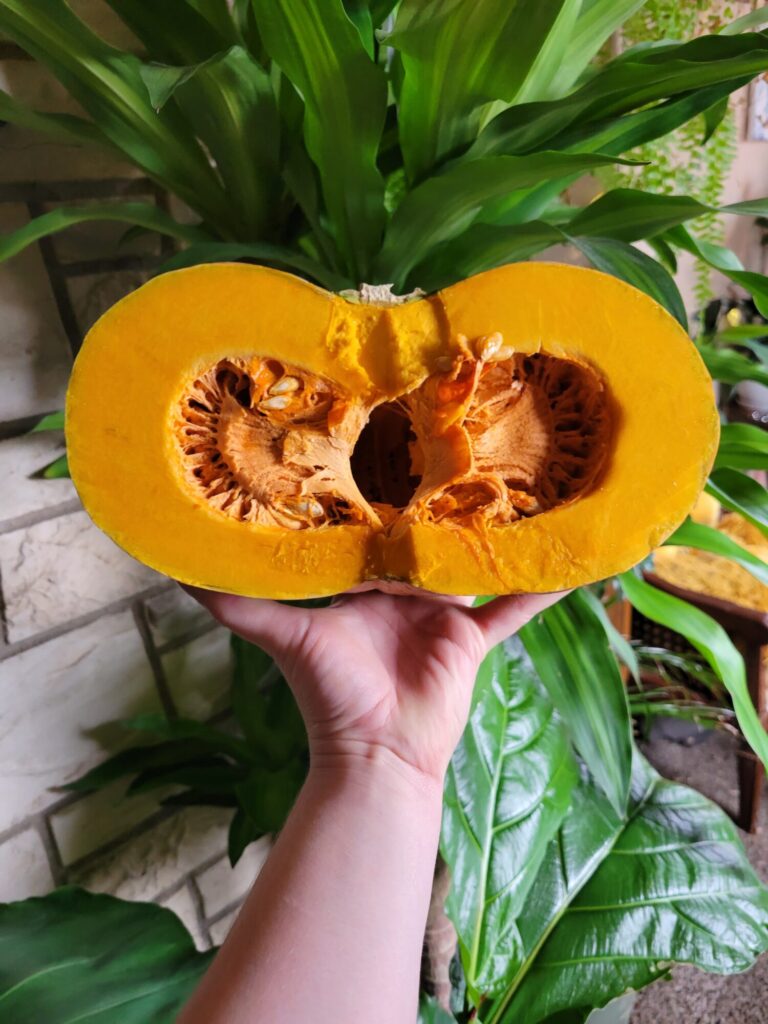
Are the Innards Edible?
Absolutely, yes they are! The "guts" are edible. You don't have to worry about removing all of them for any practical reason.
That having been said, I will be careful to remove the majority of the innards. That's because the inside of a pumpkin or squash can be texturally unpleasant and bitter. It's a lot like a bell pepper where, just because you can eat everything inside of them, you don't necessarily want to. At least not in the same way!
When I'm roasting pumpkins, squash, and other gourds, I tend to use a lot of the guts in to purée into soup or pet food. I wouldn't necessarily call this the norm and most people will probably discard them! Just make sure not to toss any seeds. Roasted pumpkin and squash seeds are delicious.
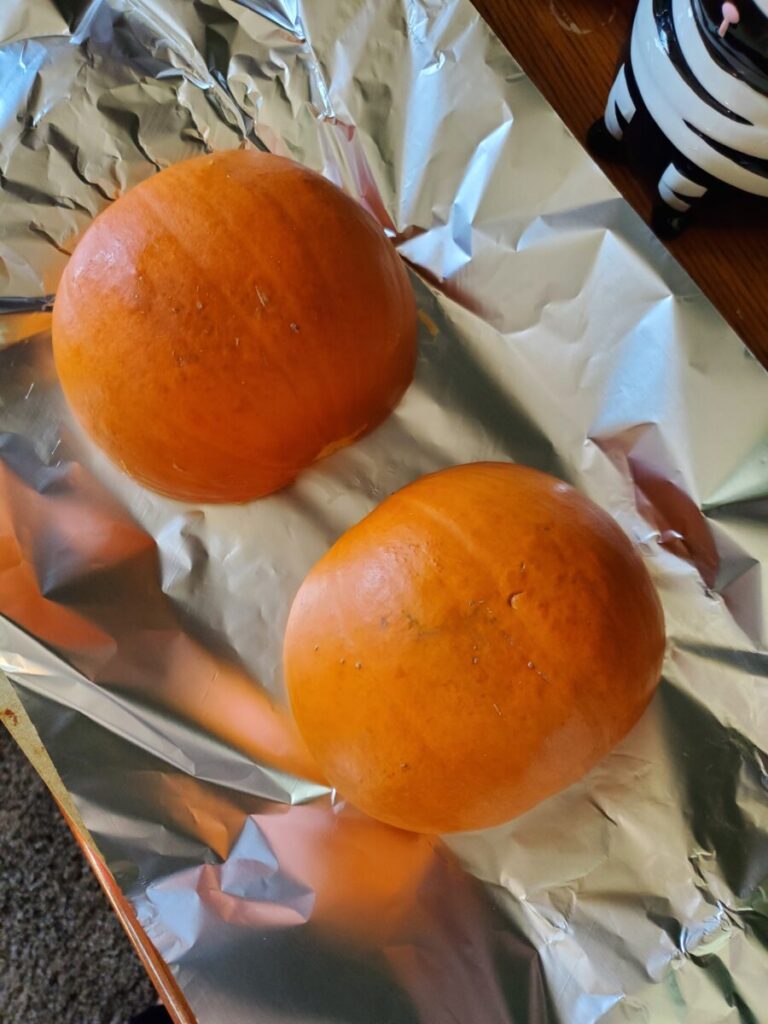
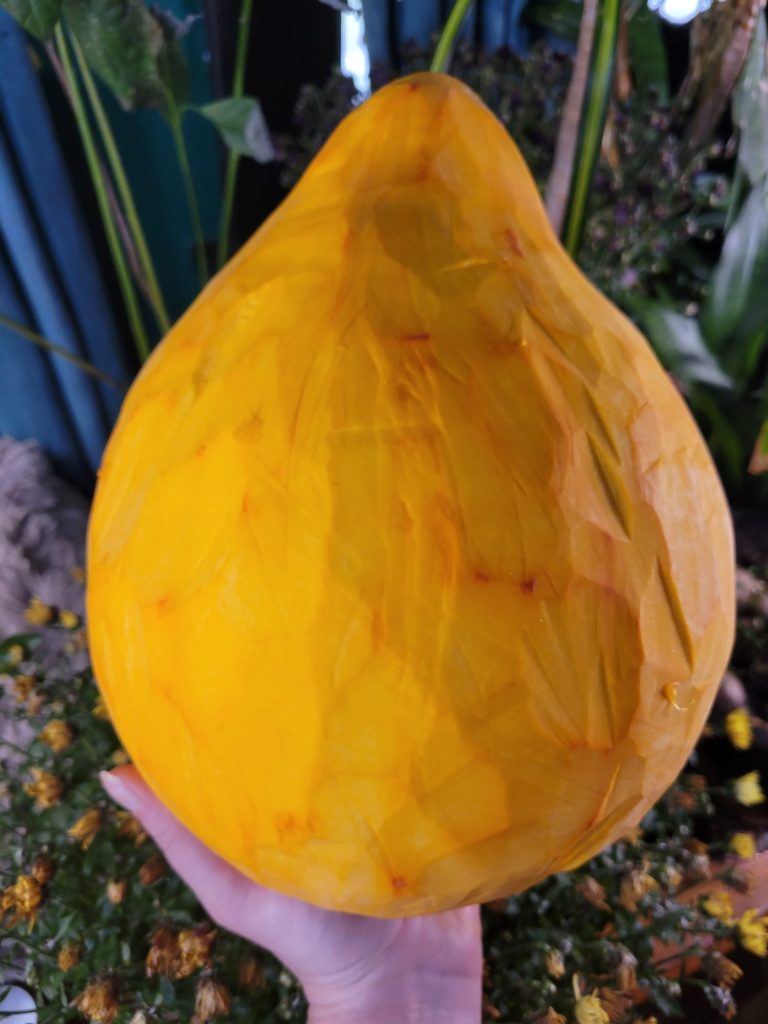
Do You Need to Peel Them?
For the majority of pumpkins, squash, and gourds, the skin is hard and inedible. So, whether you peel them before cooking or after, you will still need to peel them at some point.
If I'm going to purée the gourd, I will roast them with the skin on. This helps hold in the moisture and makes the gourds easier to handle. It's a little bit more difficult to pick up a roasted squash when there's nothing holding it together! When cooked throughout, the flesh will also shrink slightly and begin to separate from the hard outer skin. This makes it incredibly easy to peel because it more or less self-separates. You can just pull it when you go to purée.
Cubing the pumpkin or squash is a different matter, though. When roasting cubed gourds, I'll peel them beforehand. Technically you could roast them with the skin on, but then you'd be painstakingly peeling the skin off of each individual piece after the roast! And that would be incredibly tedious. Not to mention remove the seasoning on one side.
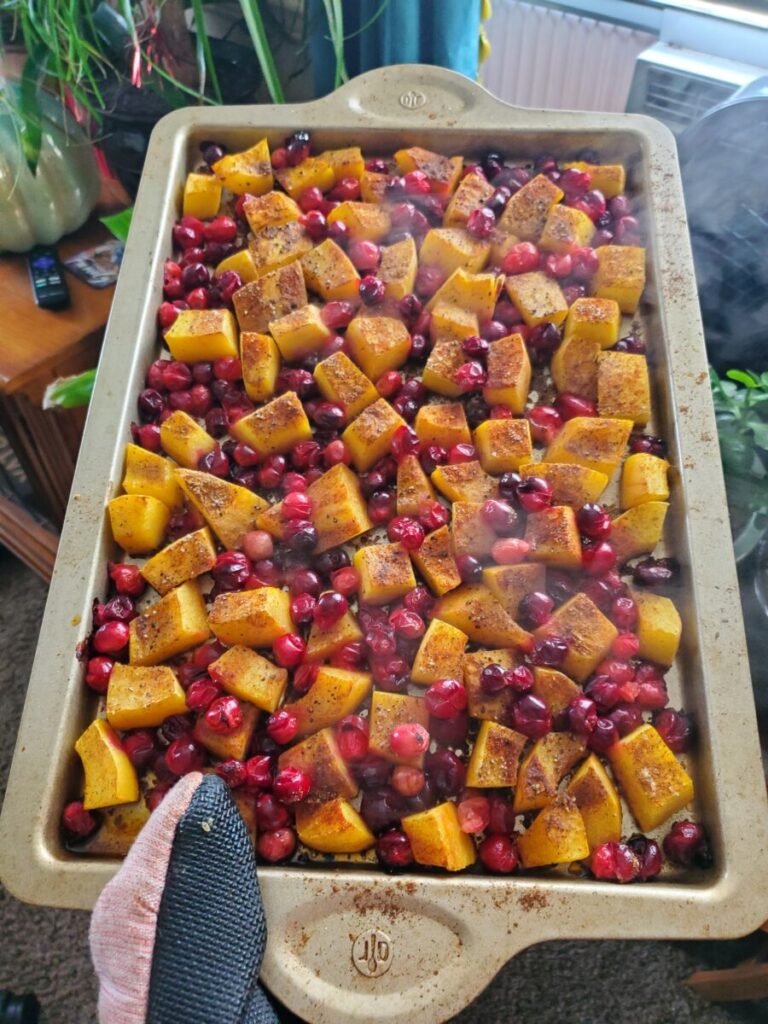
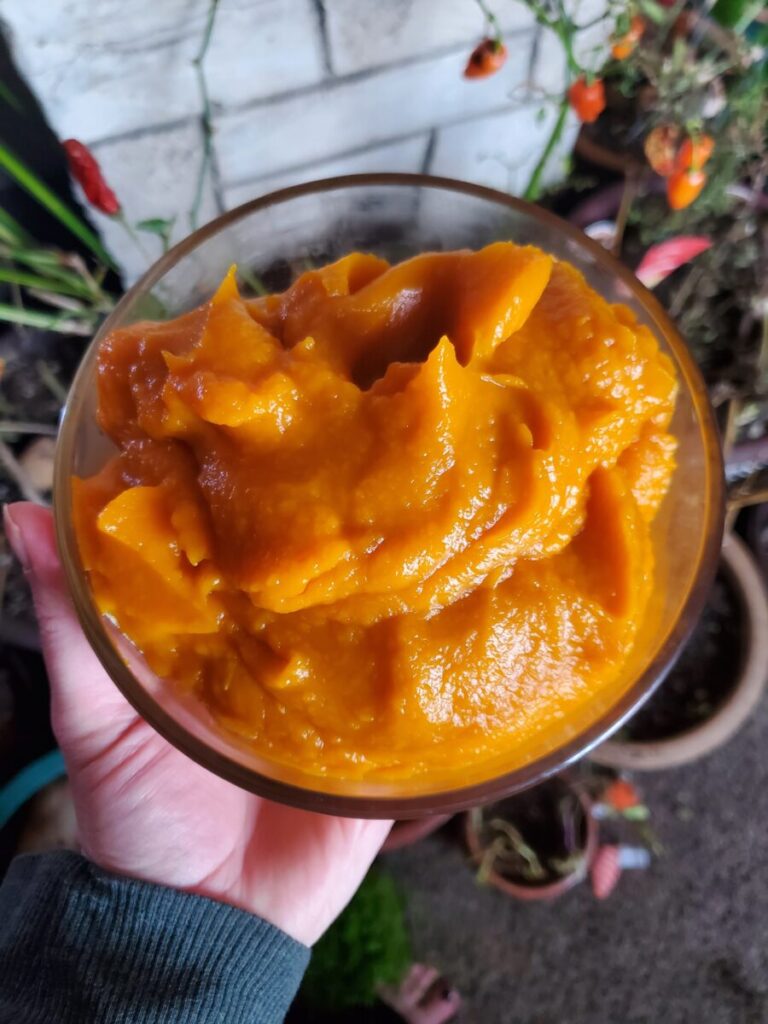
Cubed Or Puréed?
Puréed
When thinking about roasting pumpkins, squash, and other gourds, an important part is determining whether you want to cube or purée them. I personally tend to prefer purée because it removes the stringiness that plagues some varieties of gourds. Some people are fond of this. Spaghetti squash comes to mind.
This is all about personal preference, though, and I much prefer a smoother consistency and almost always purée them. The recipe at the bottom of this page entails how to roast pumpkins, squash, and other gourds for purée.
Cubed
You certainly don't have to follow this and cubing them is always an option. I do this occasionally with pie pumpkins and butternut squash in particular.
There are a couple of ways to do this.
You can make small enough cubes that the gourds cook in another dish, like with Pumpkin Rice or Squash Rice. In these, you simply peel the pumpkin or squash, cut into small cubes, put in the rice cooker along with other ingredients, and then they'll cook in the same time as the rice or other grain or legume of choice.
Alternatively, you can peel the gourd, cut into cubes (which can be larger if you choose), place on a baking sheet with oil and spices, and roast in the oven. This will create a firmer texture where the pumpkins and squash hold their shape a bit more and don't begin to disintegrate into the dish. I do this with Roasted Pumpkin Curry and Roasted Squash Lentils.
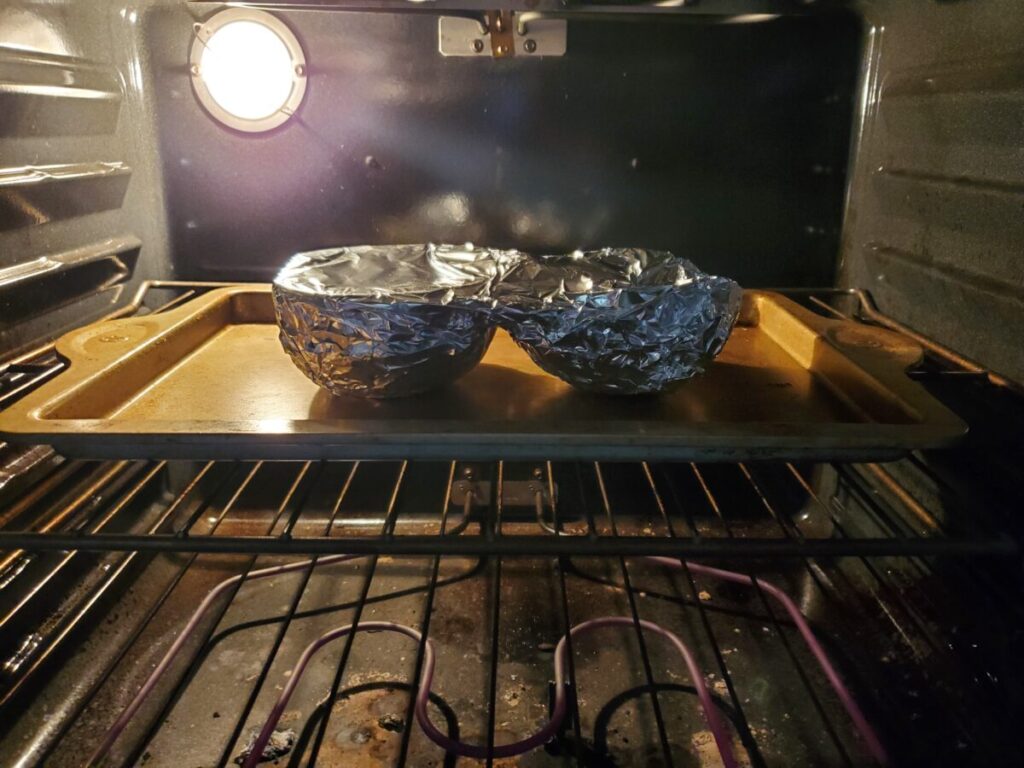
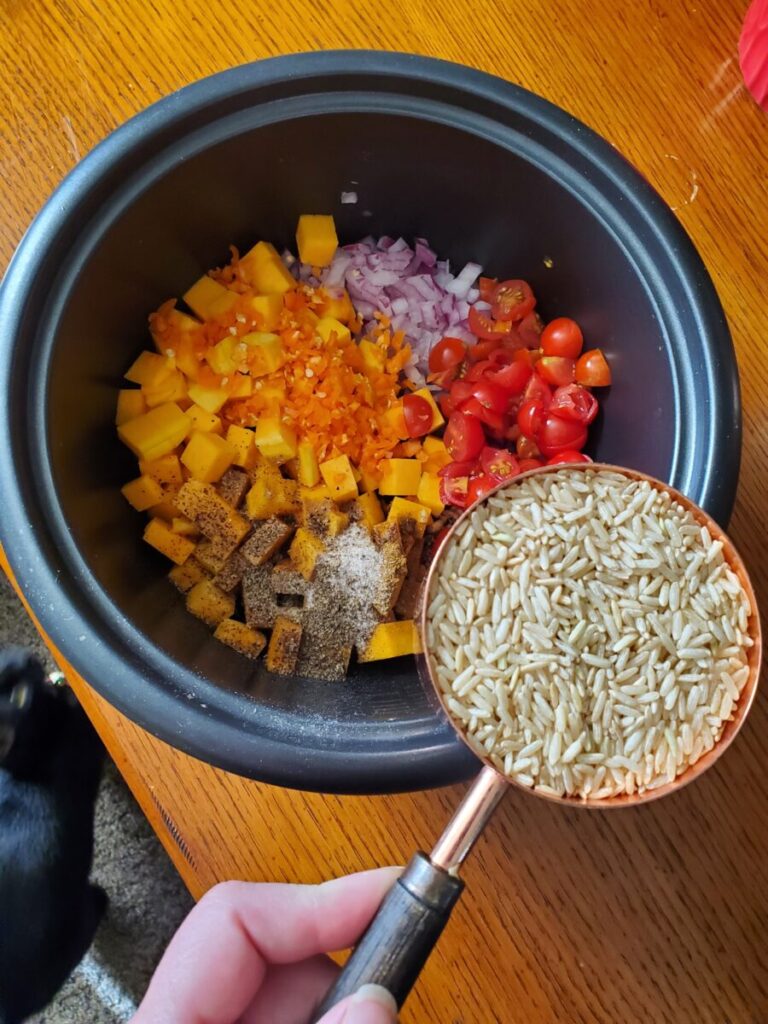
How Long to Roast Pumpkins, Squash, and Gourds
This is the trickiest part about roasting pumpkins: the size of the pumpkin can drastically increase the cook time. You’ll know that they’re done when the flesh is soft and you can poke it with a fork without any resistance. It will vaguely resemble the consistency of potatoes before you mash them.
For smaller gourds, like pie pumpkins and butternut squash, the best thing to do is to cook them for 45 minutes and then check them every 5-10 minutes after that until they’re cooked throughout.
For larger gourds, like Calabaza, I recommend cutting them into quarters, rather than just in half. This way, each of the pieces are about the size of a pie pumpkin and will roast in a similar amount of time. Otherwise, simply roast longer. Actually, MUCH longer. I tried this once and it took about two and a half hours.
Gallery for Roasting Pumpkins, Squash, and Gourds
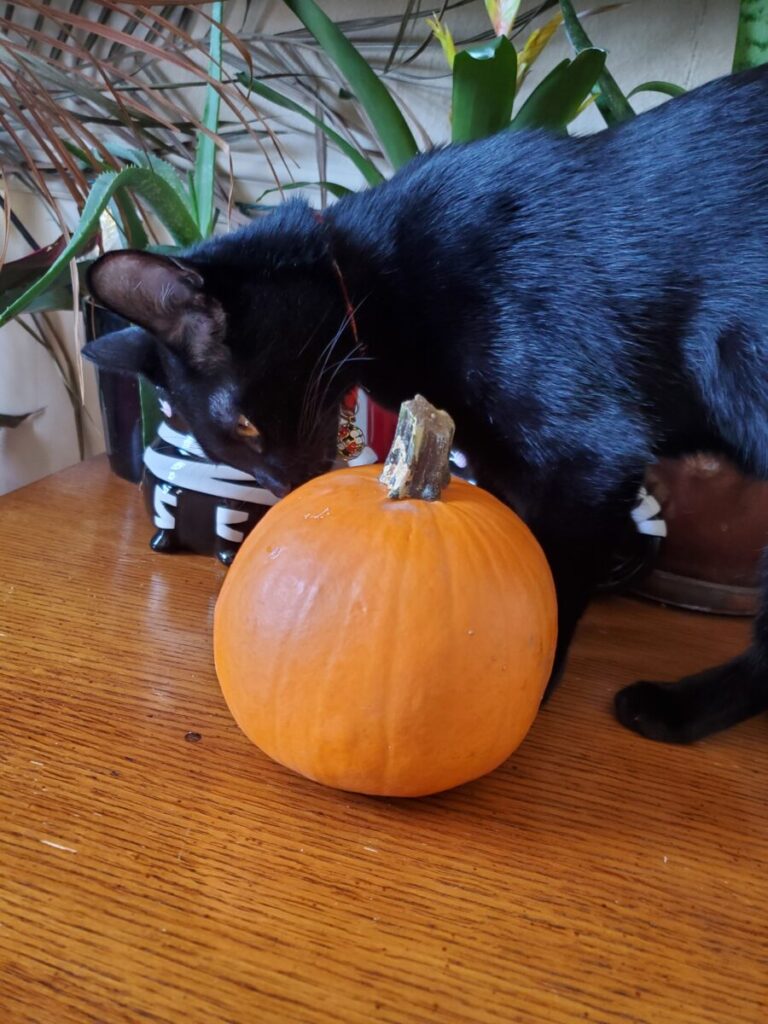
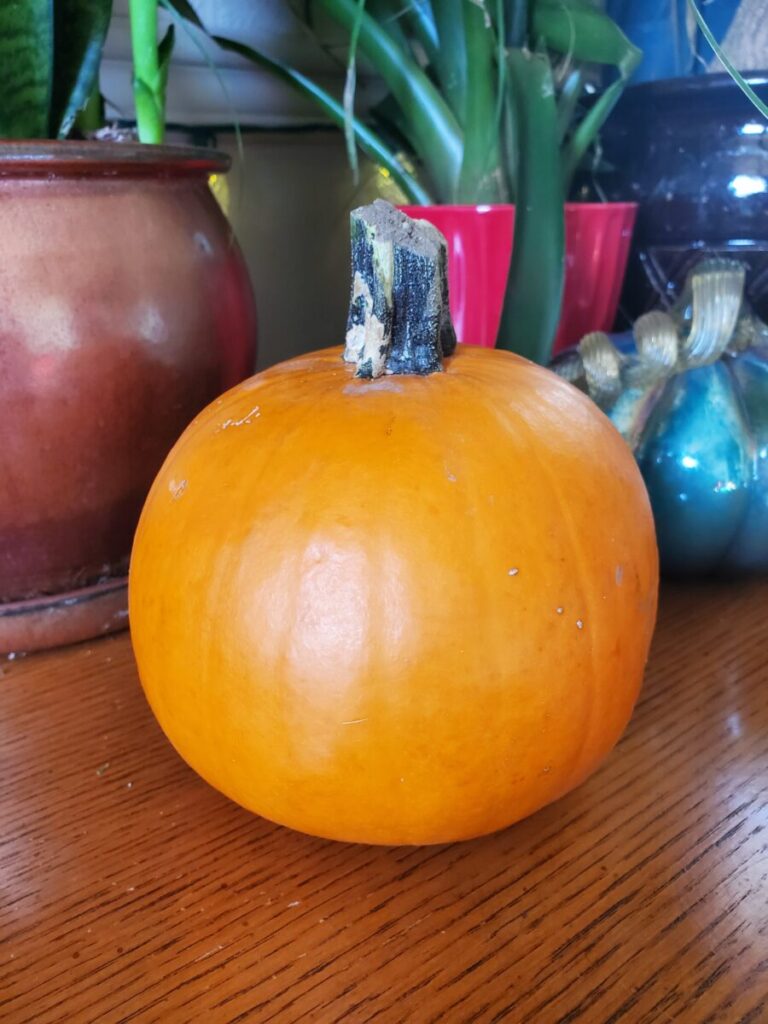
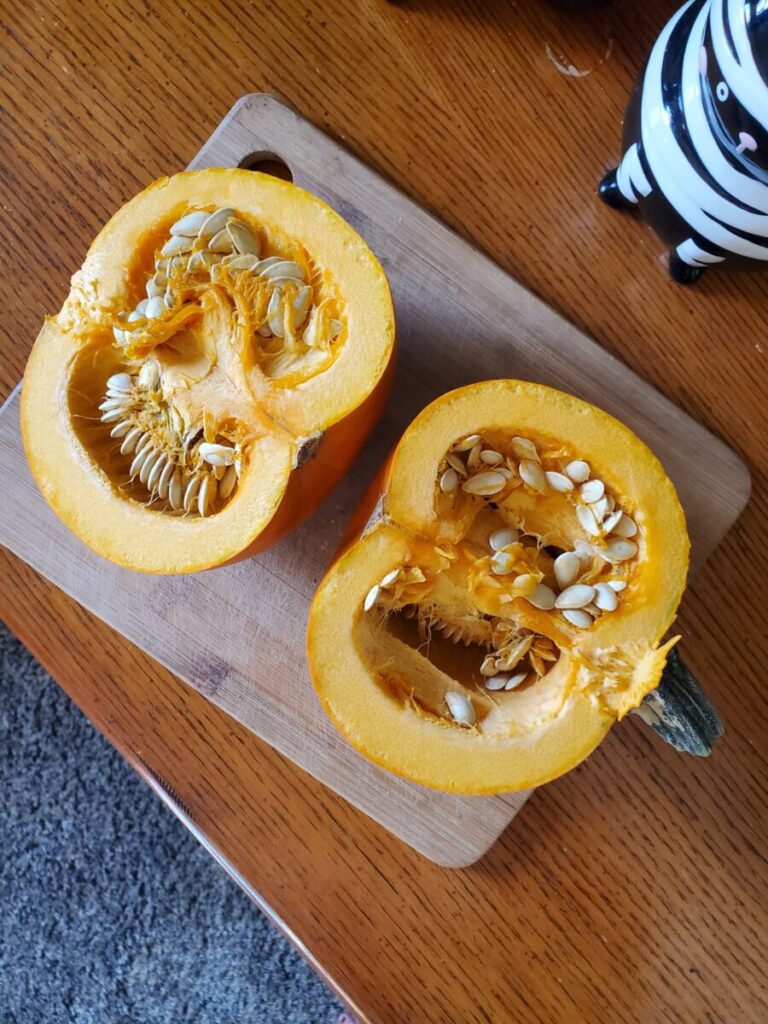
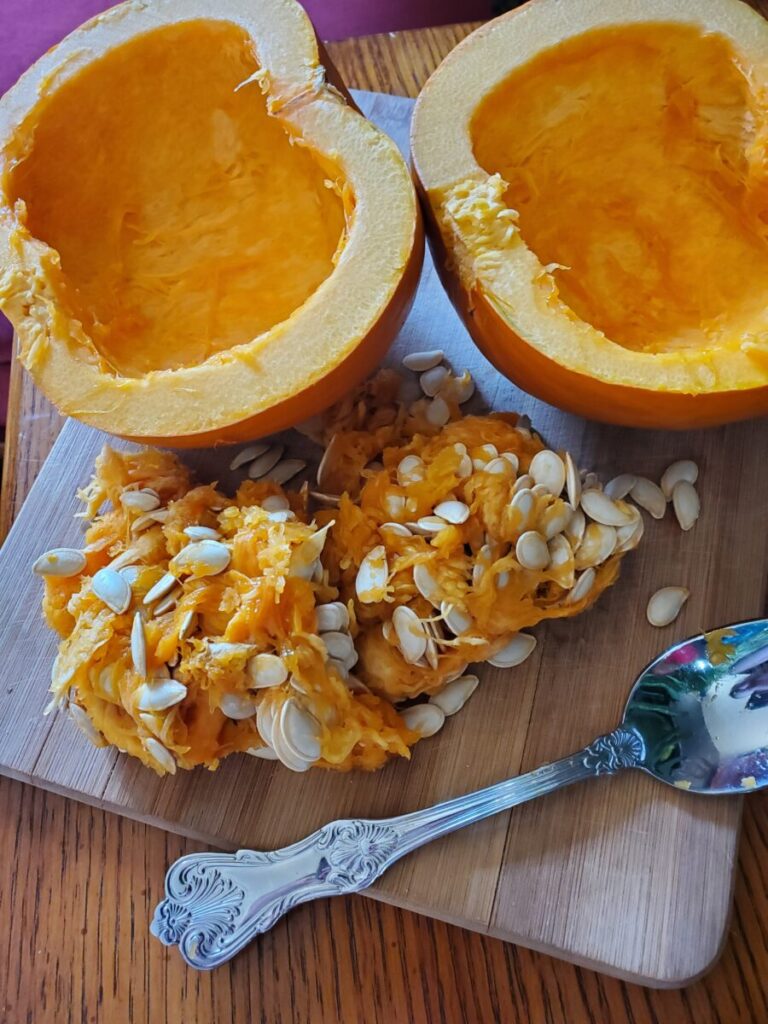
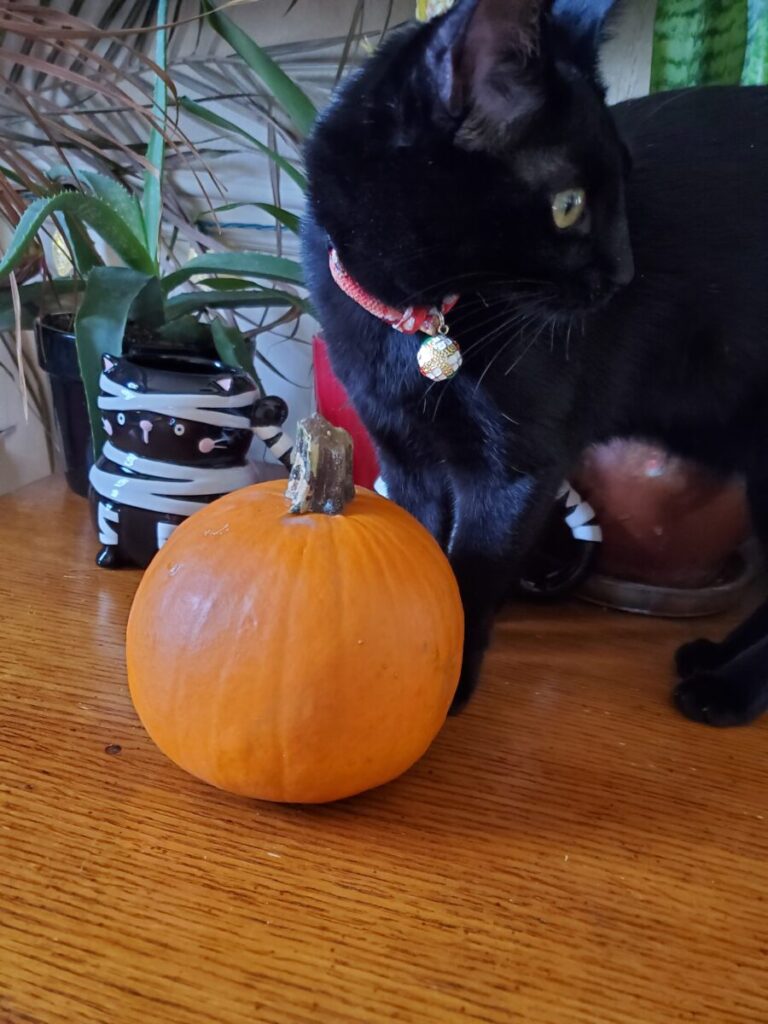
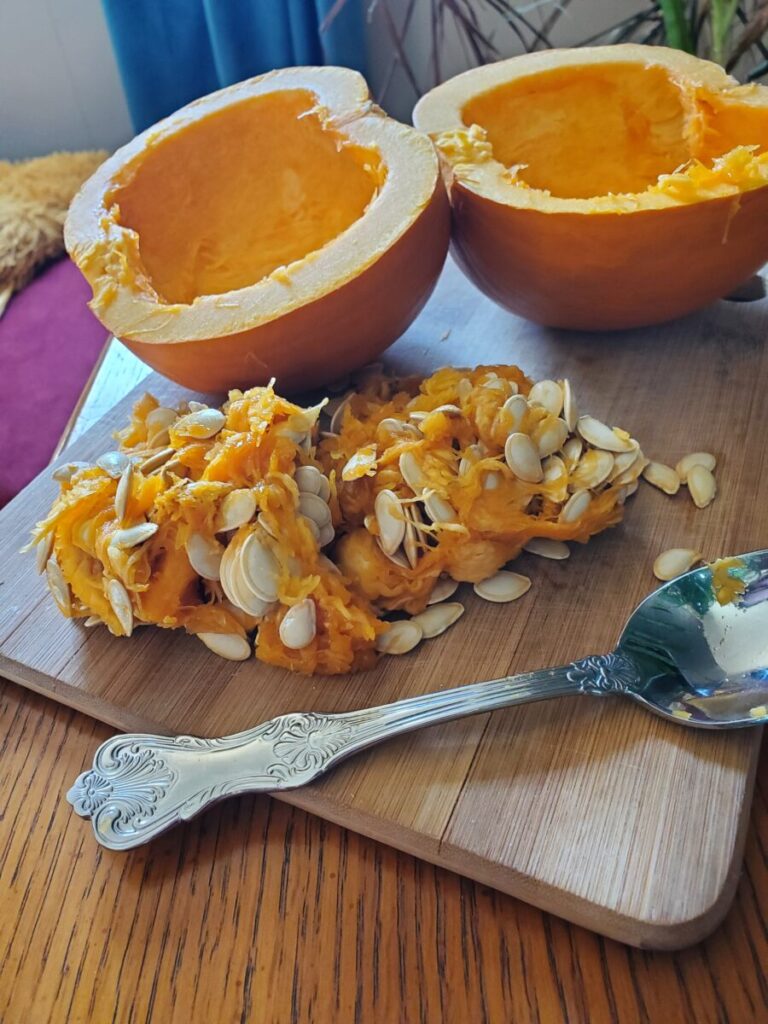
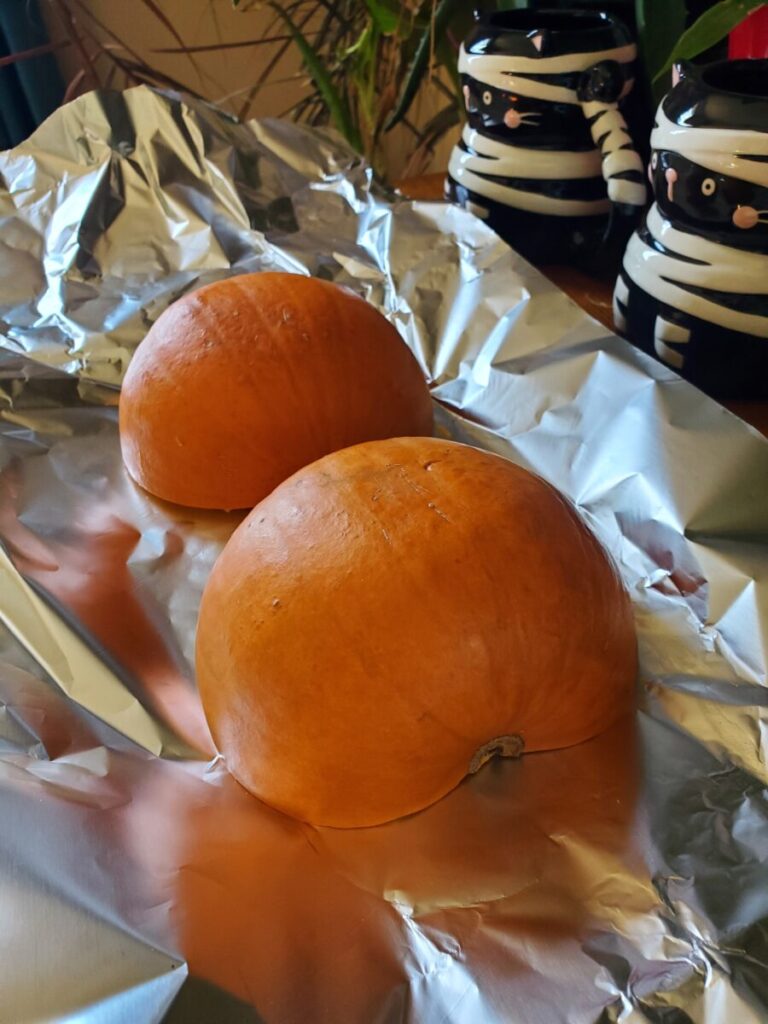
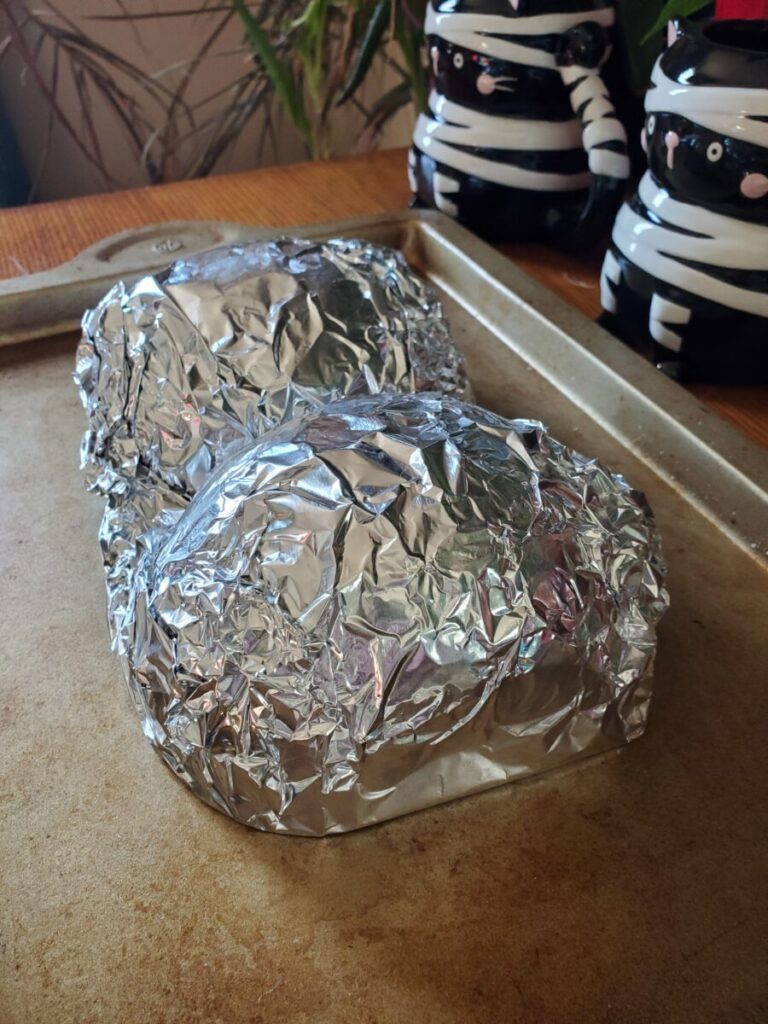
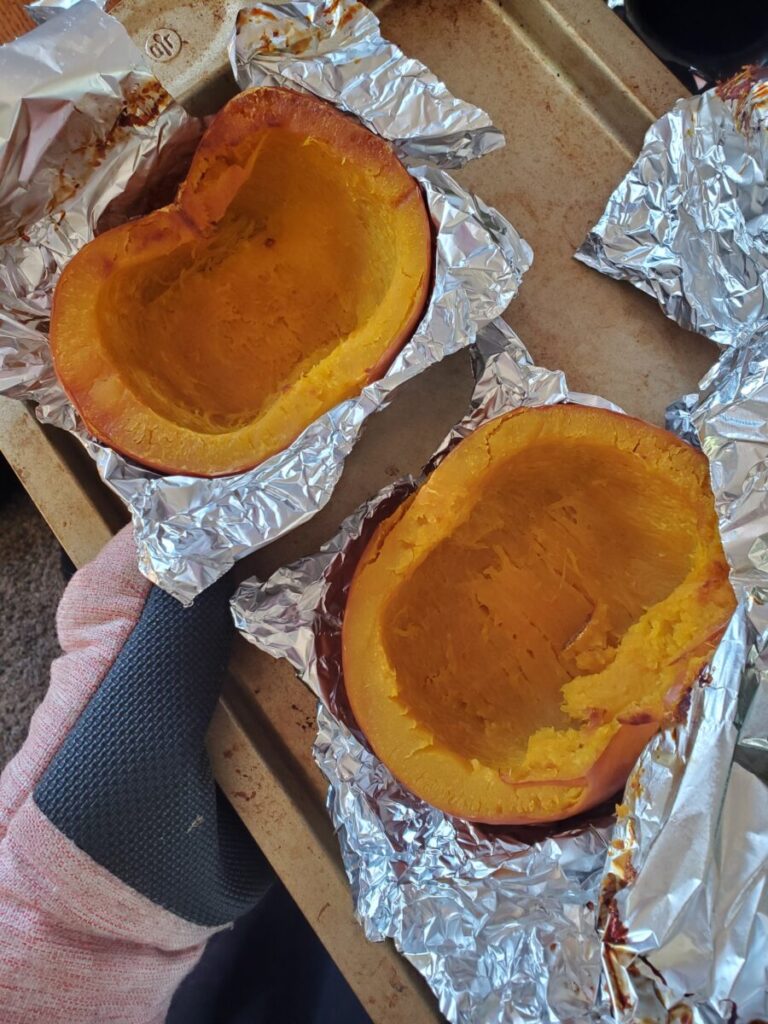
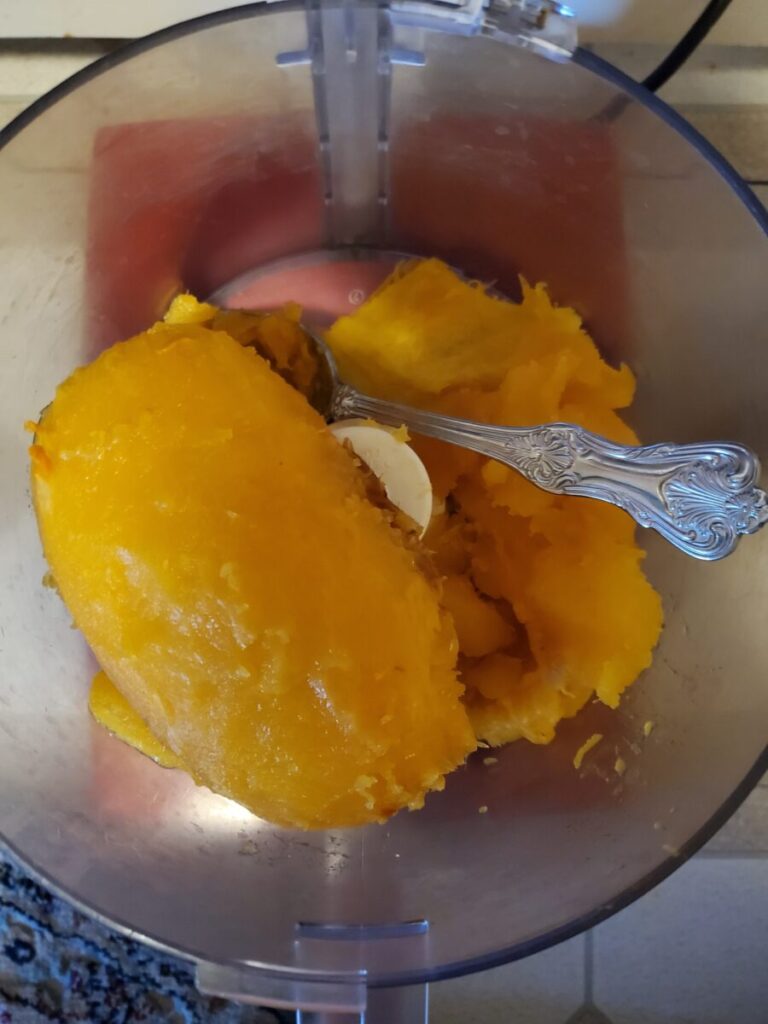
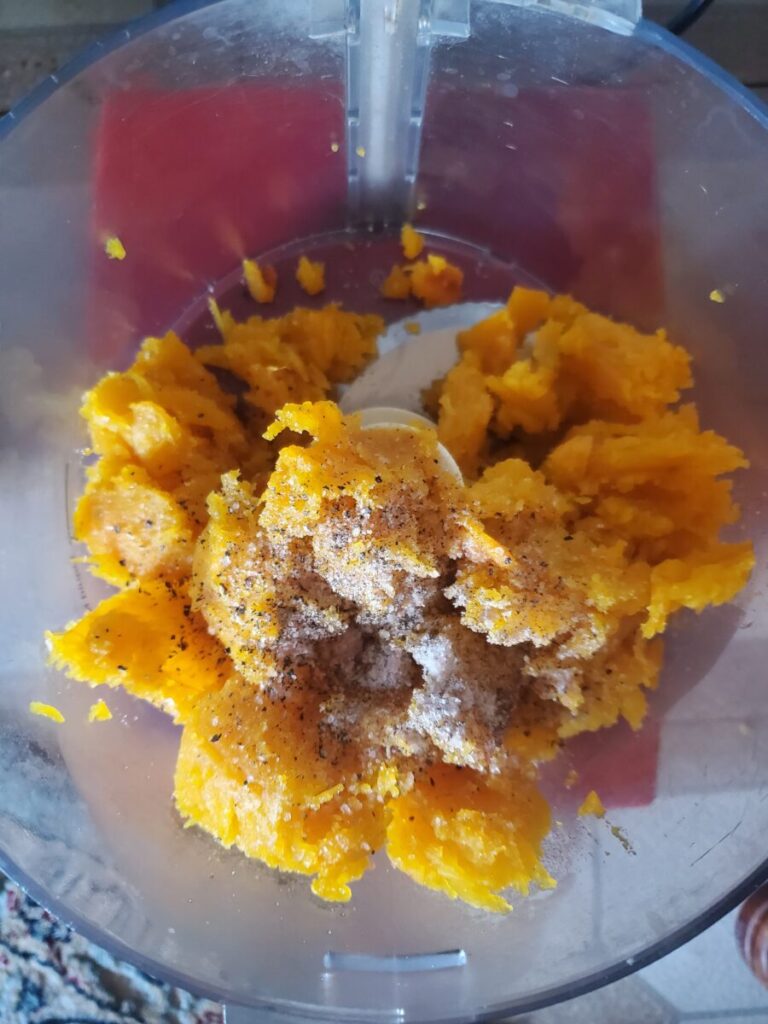
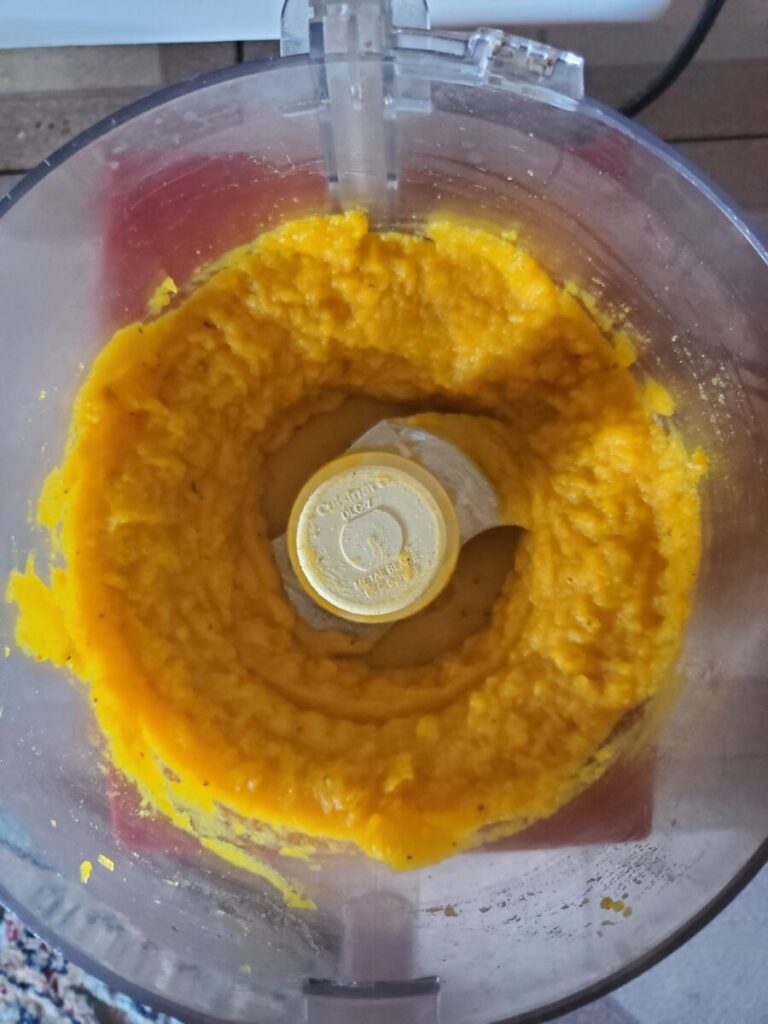
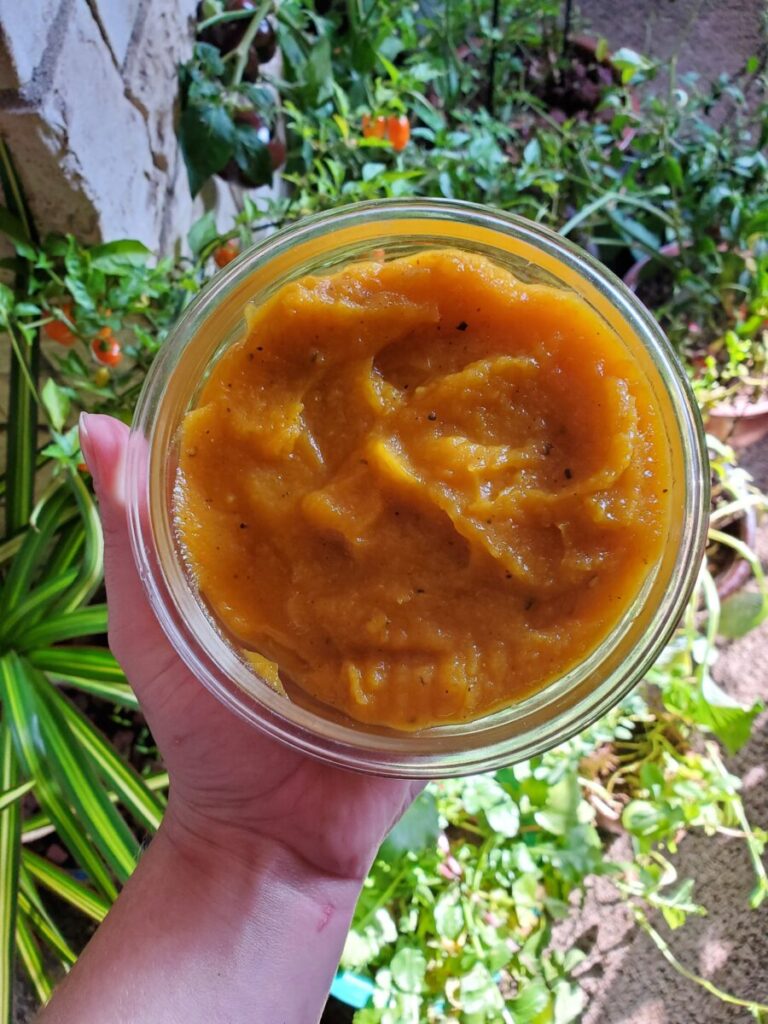
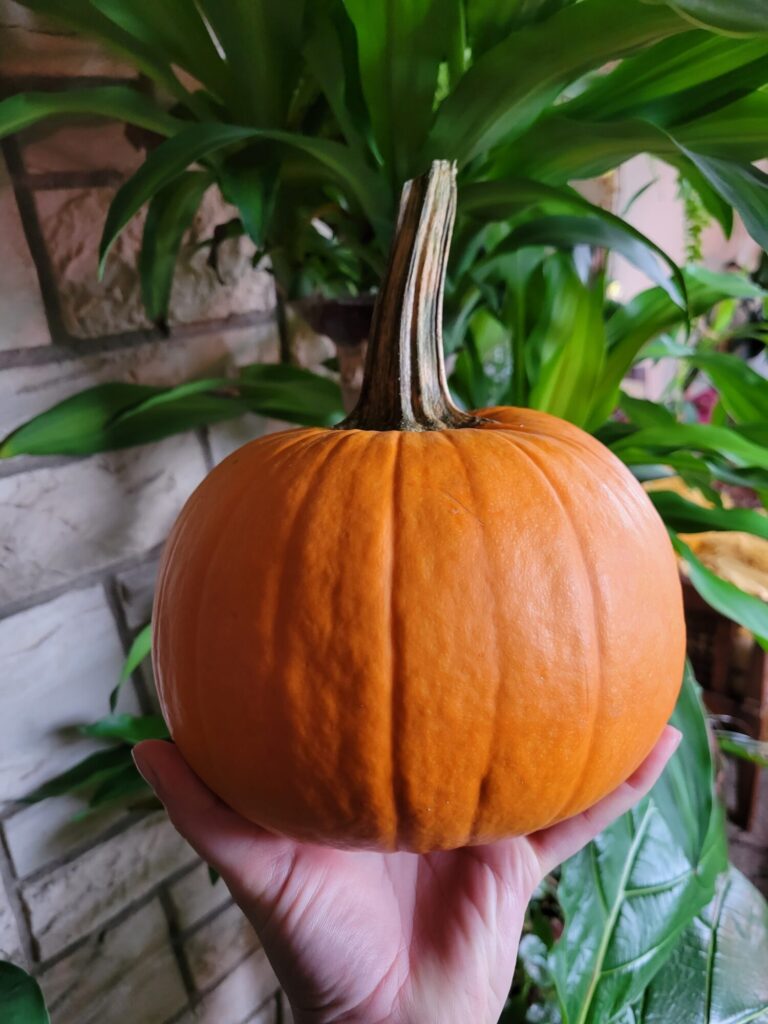
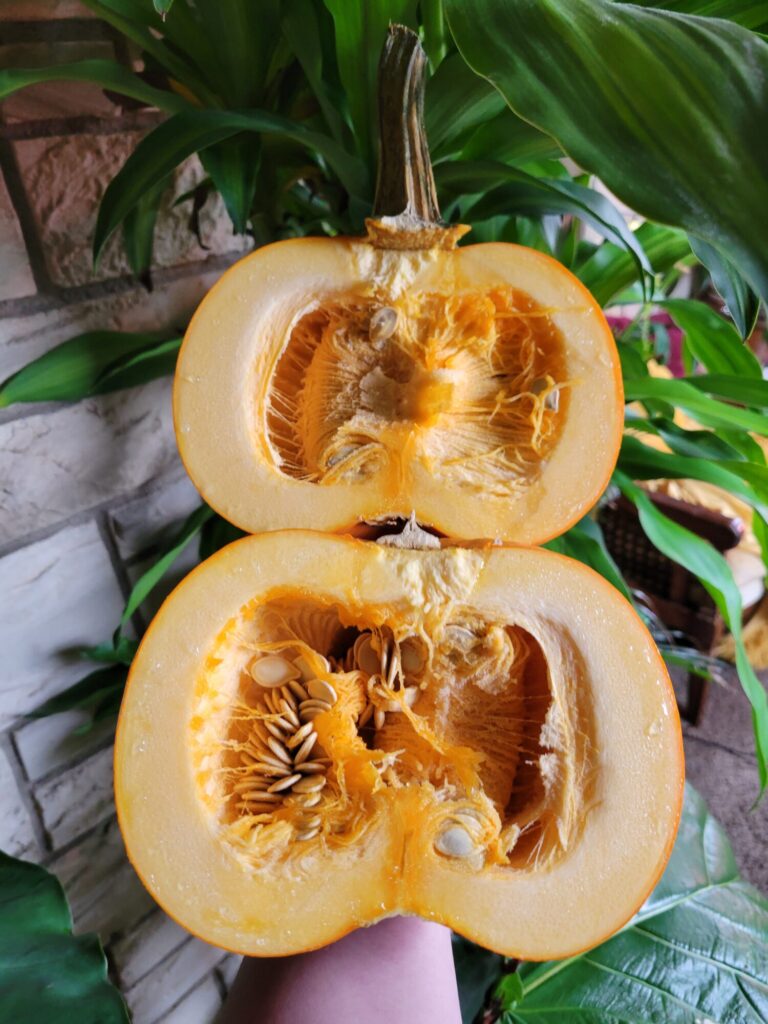
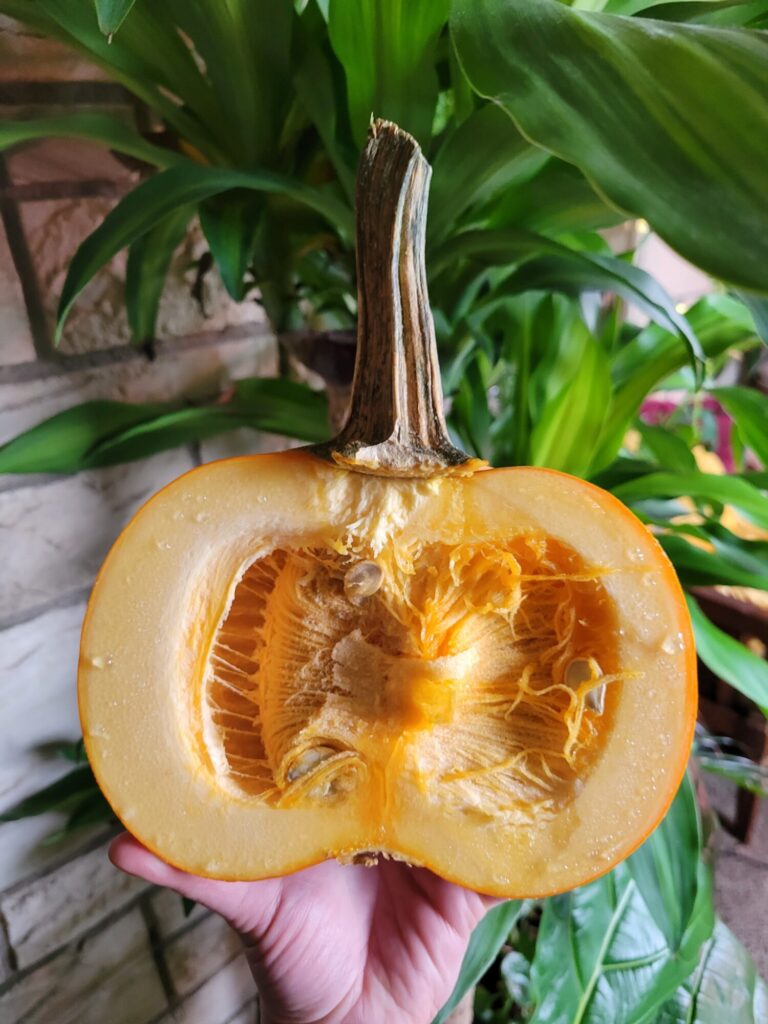
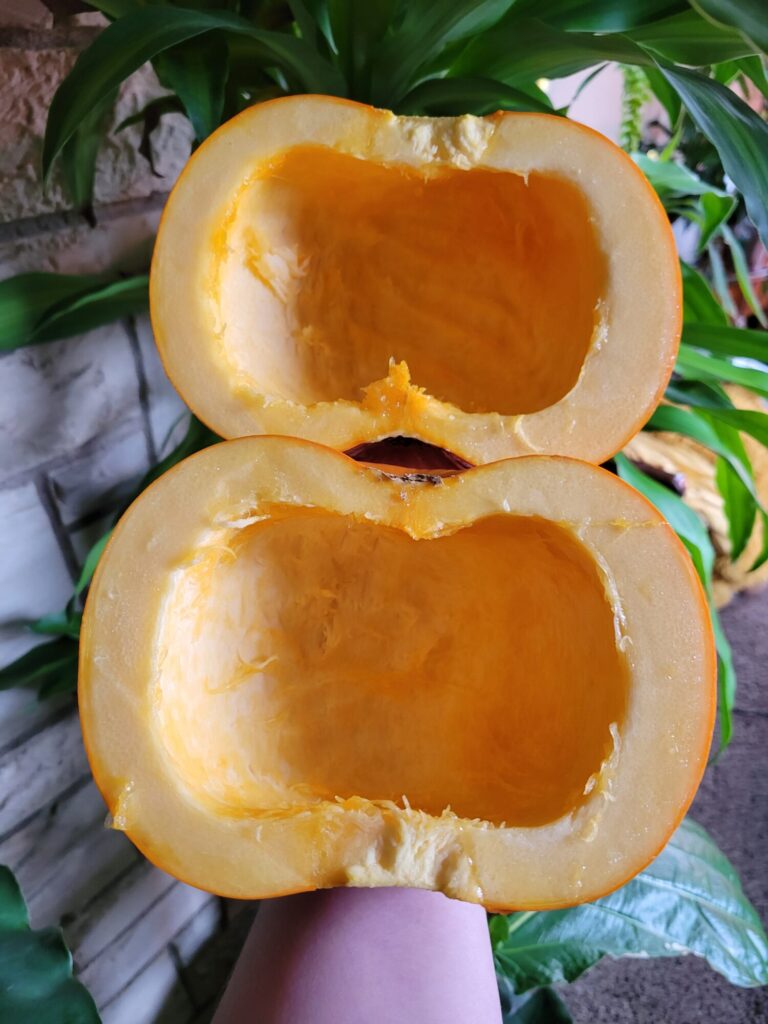
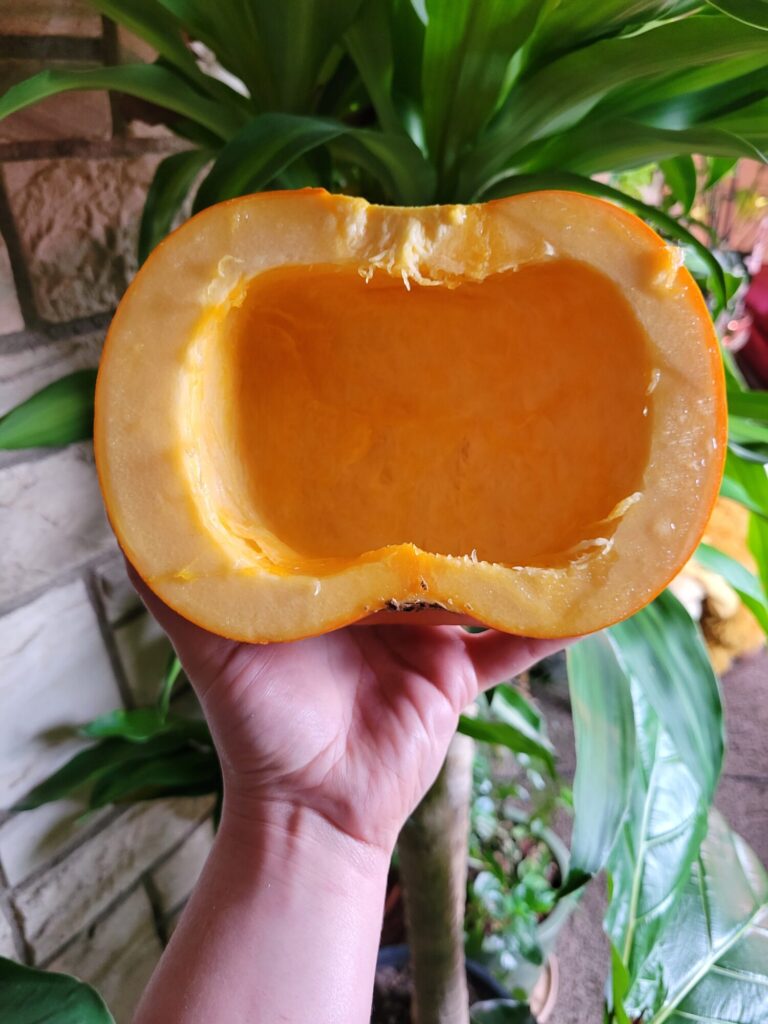
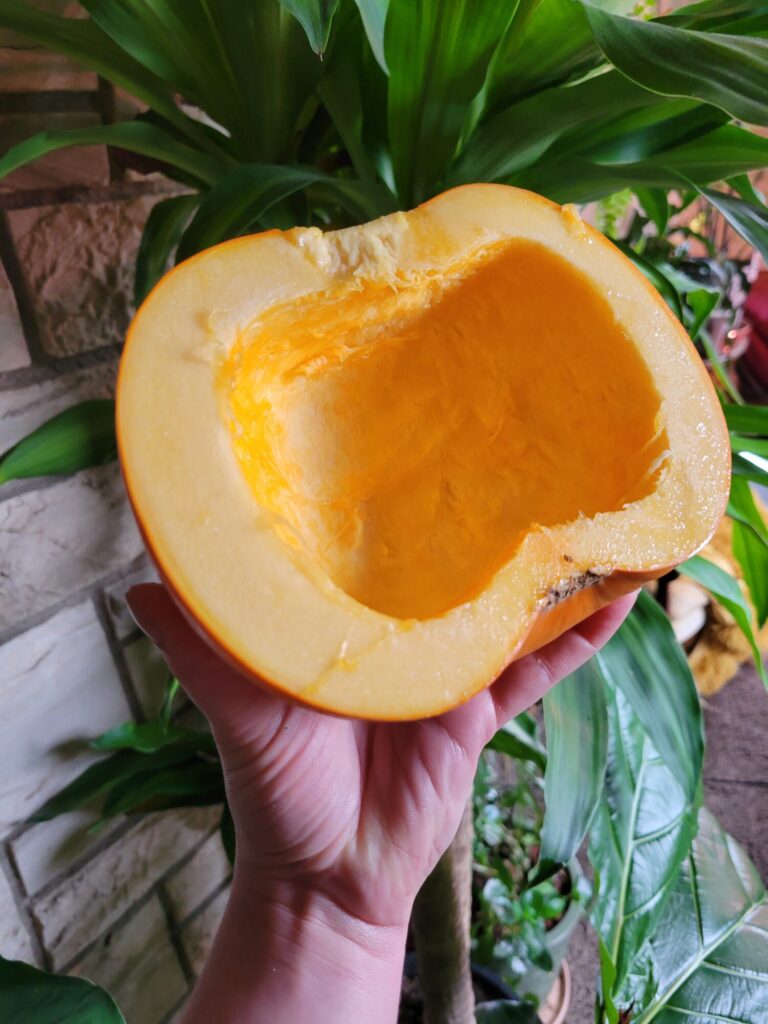
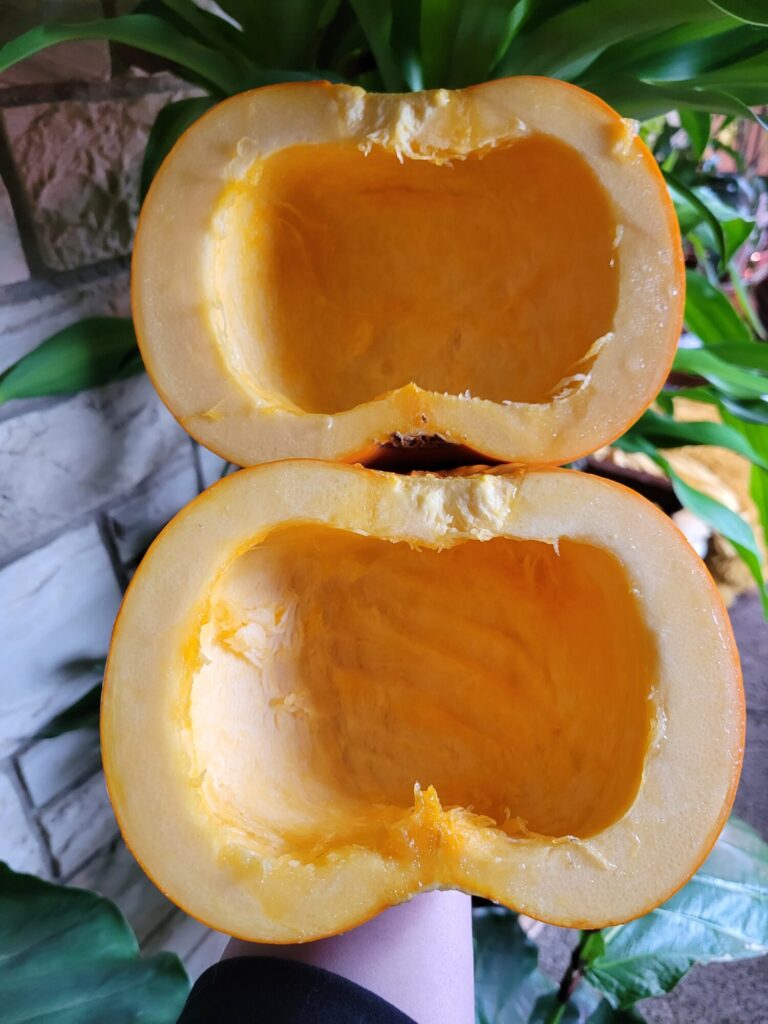
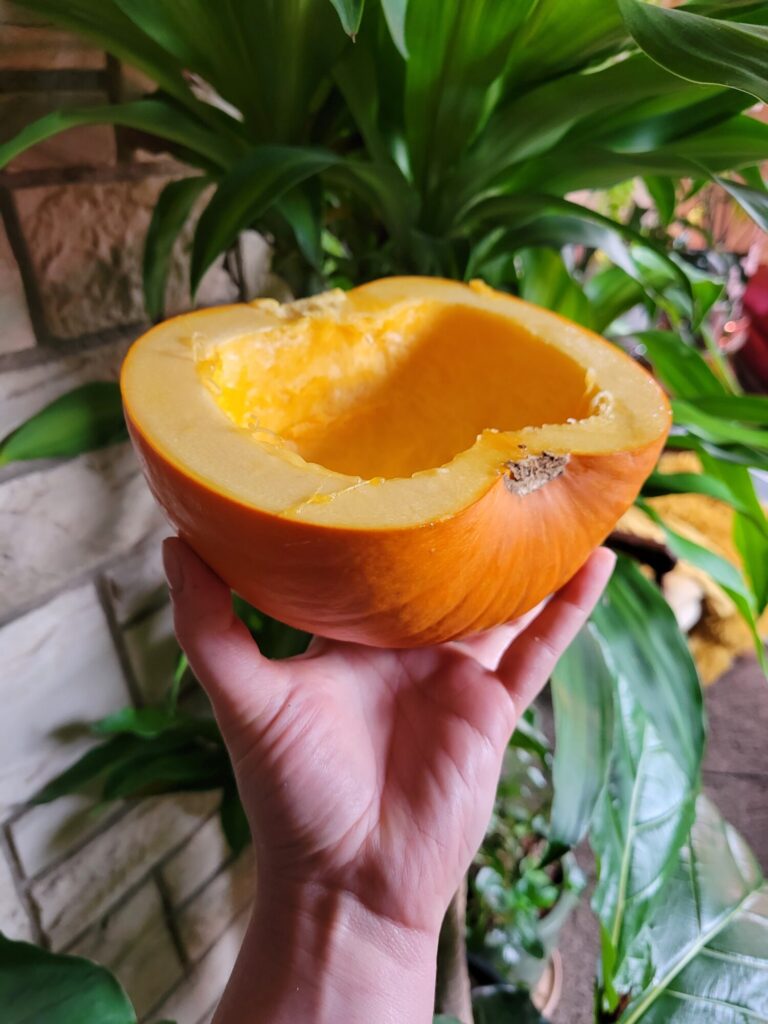
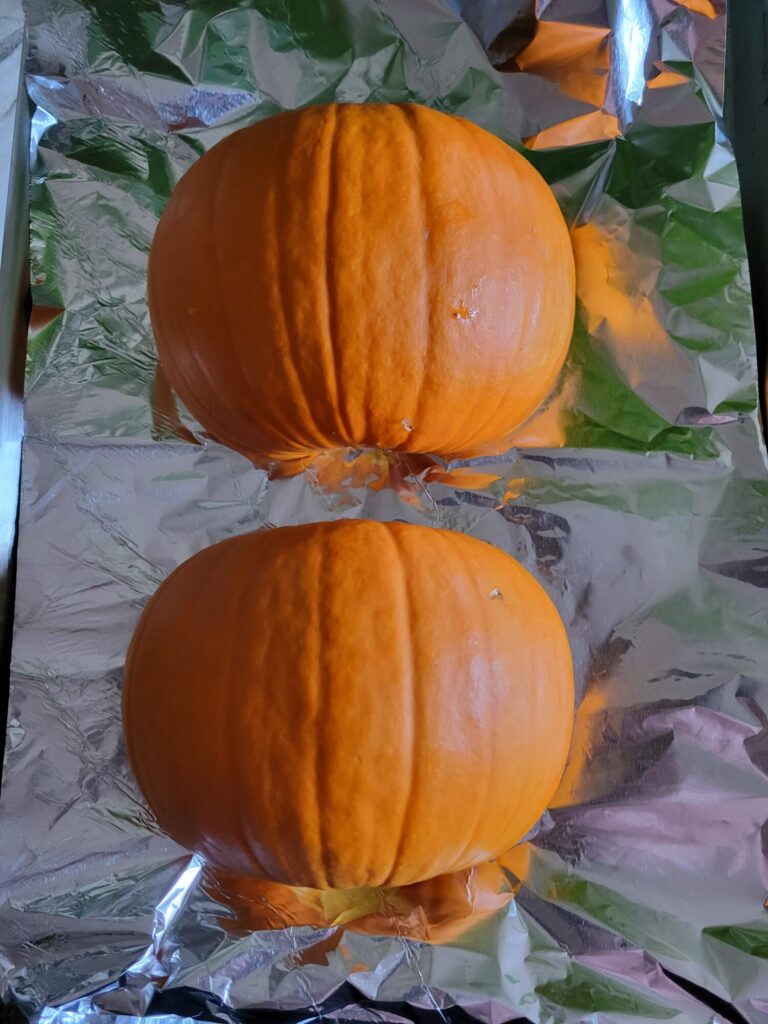
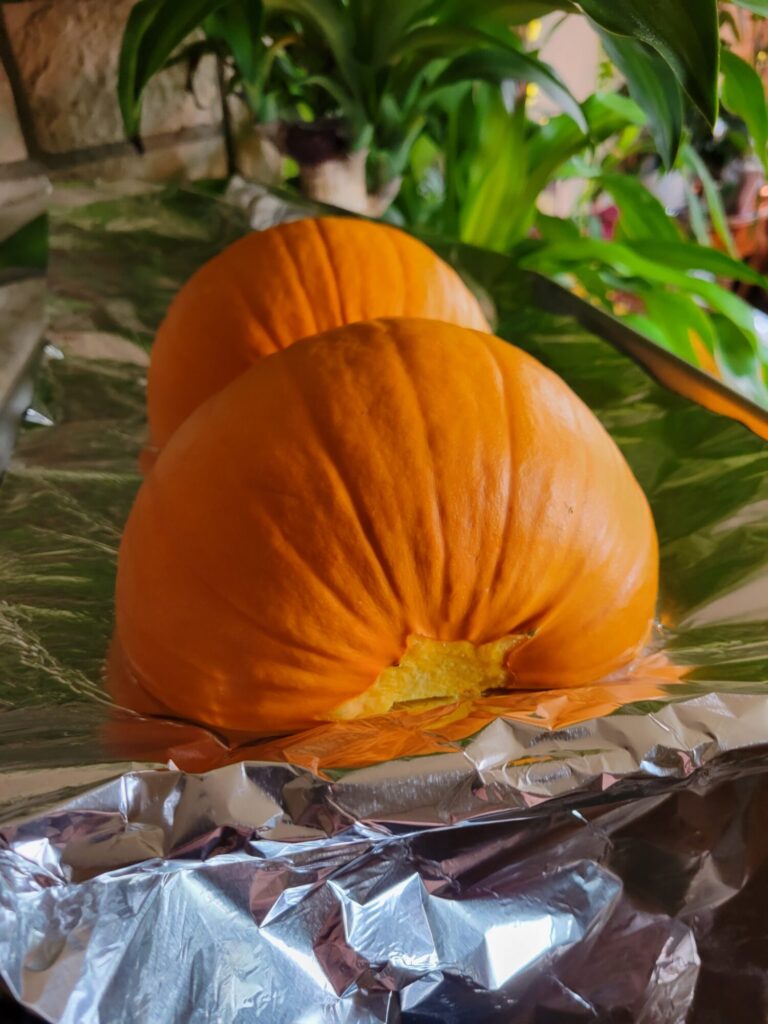
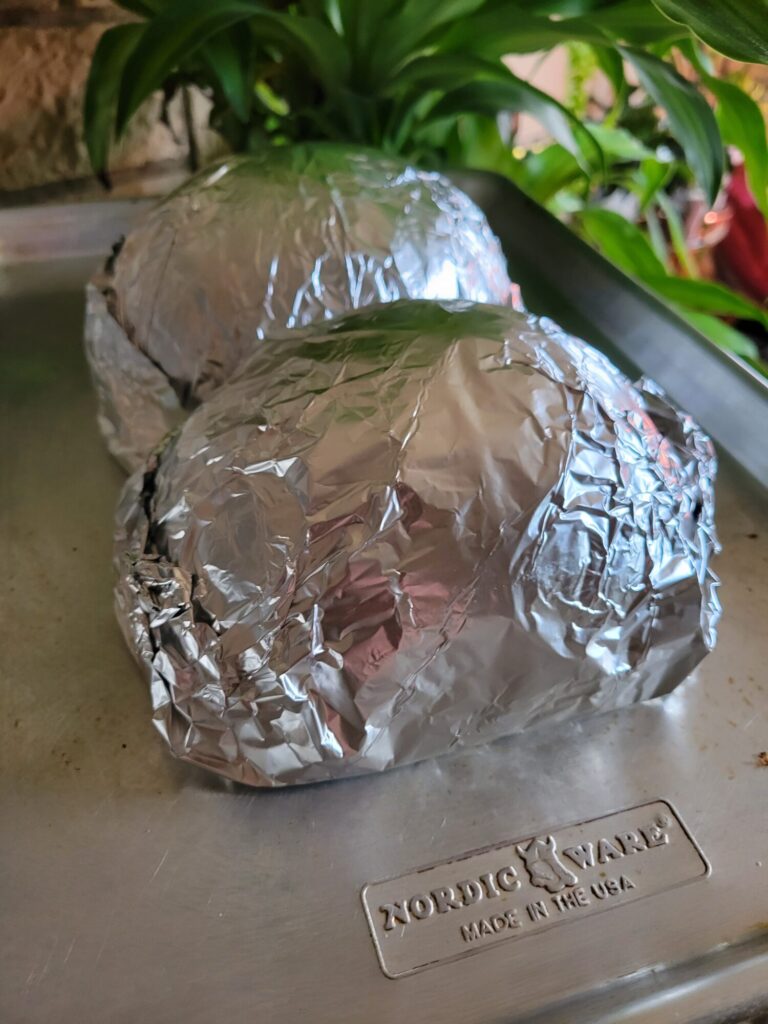
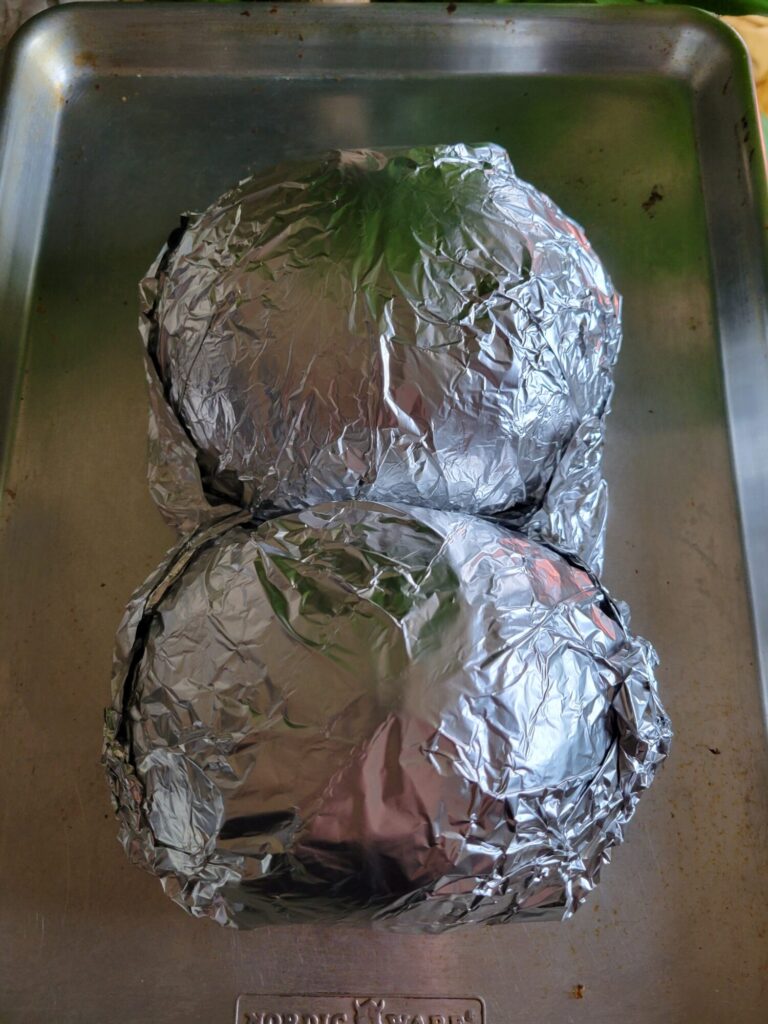
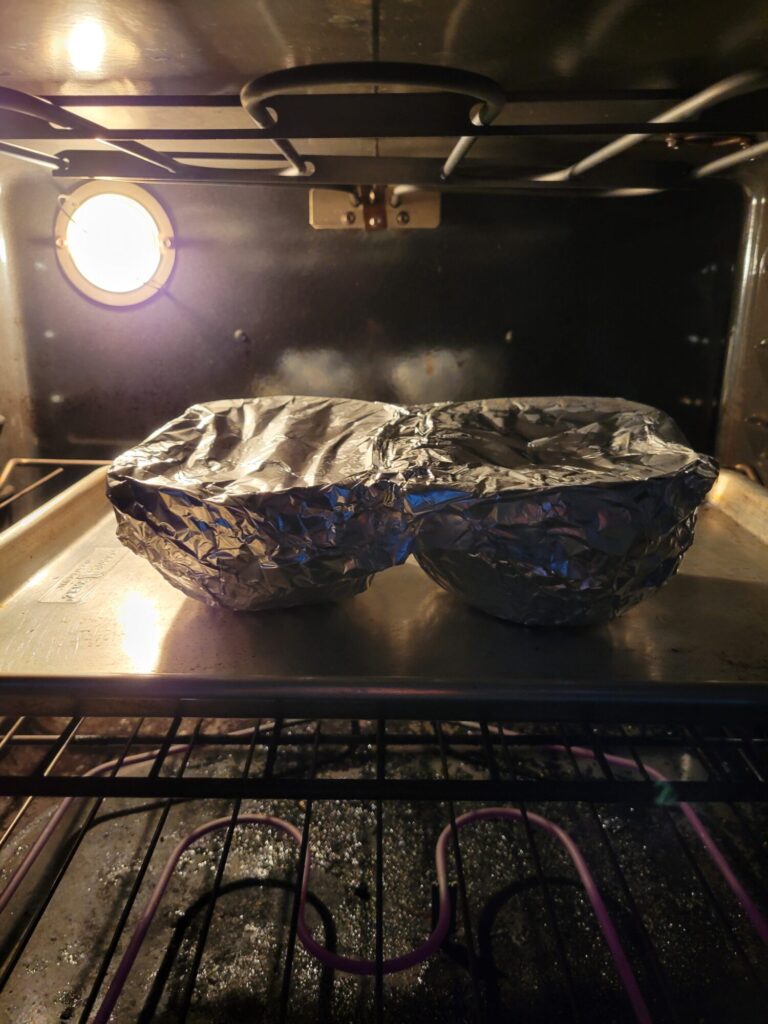
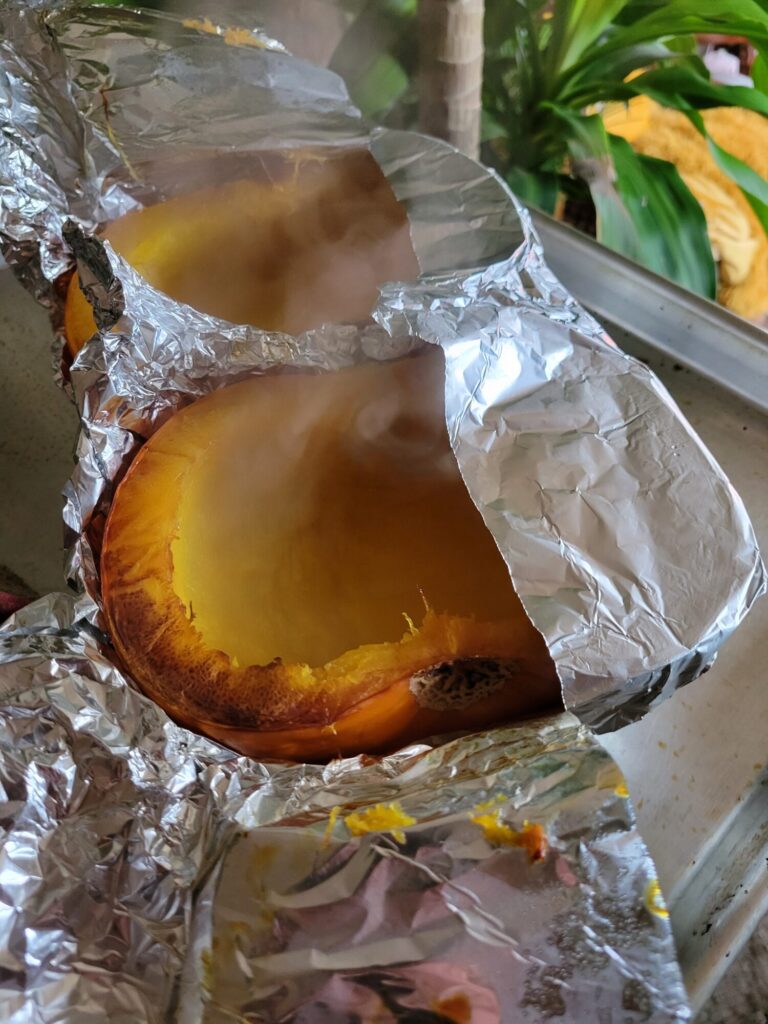
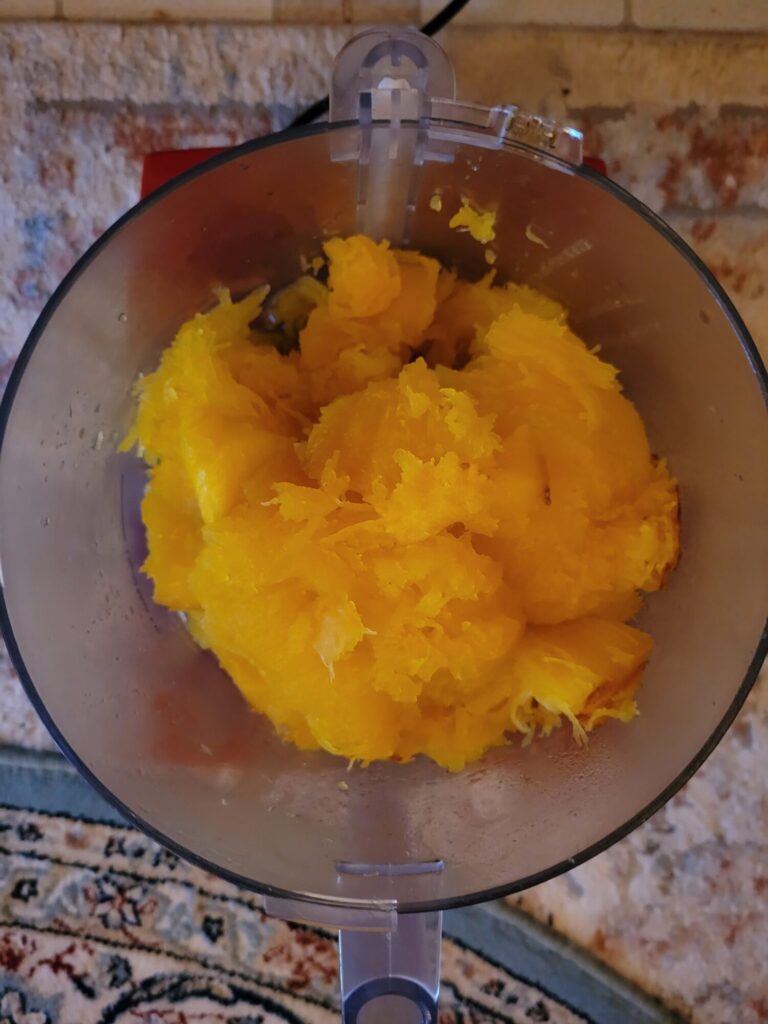
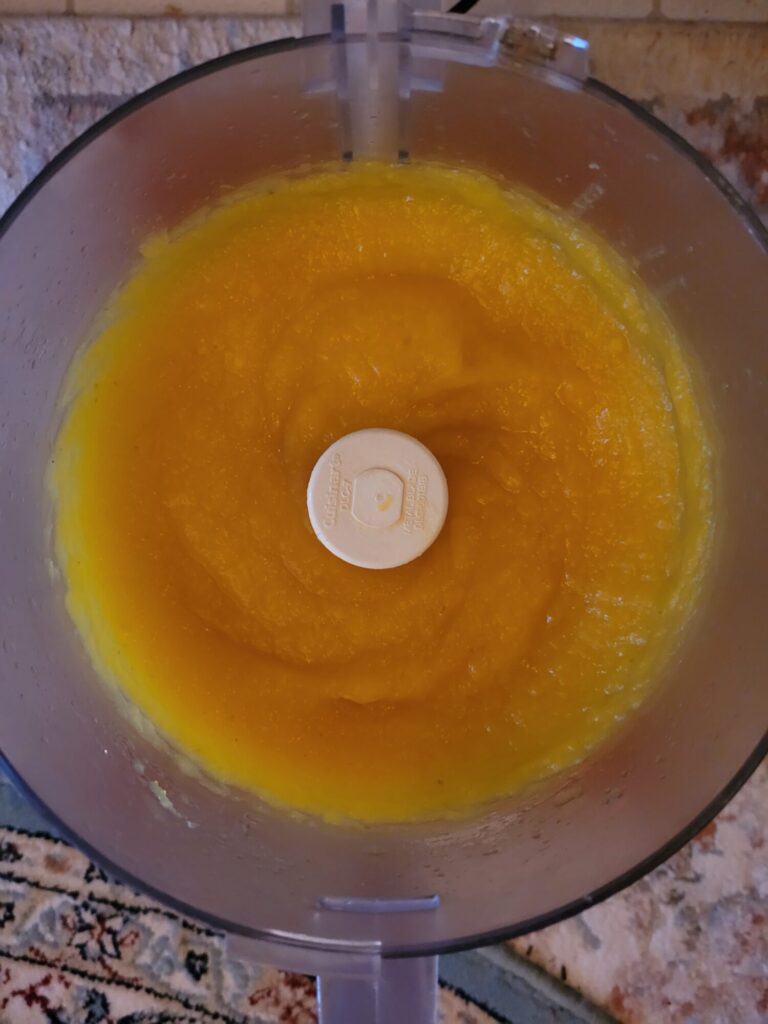
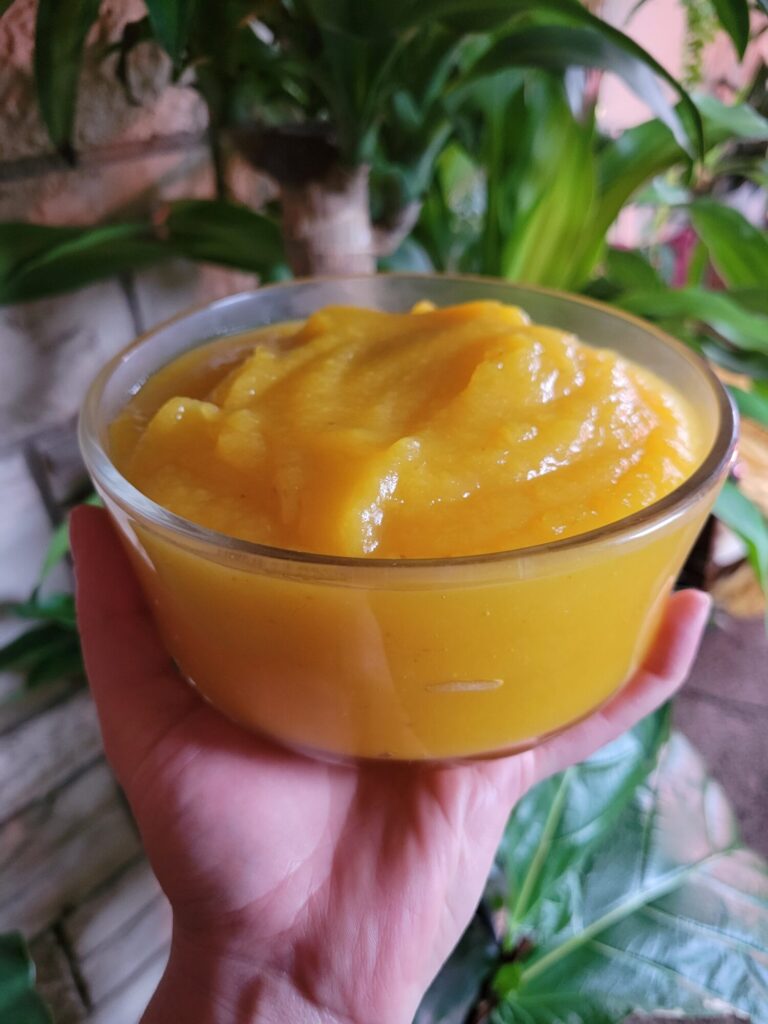
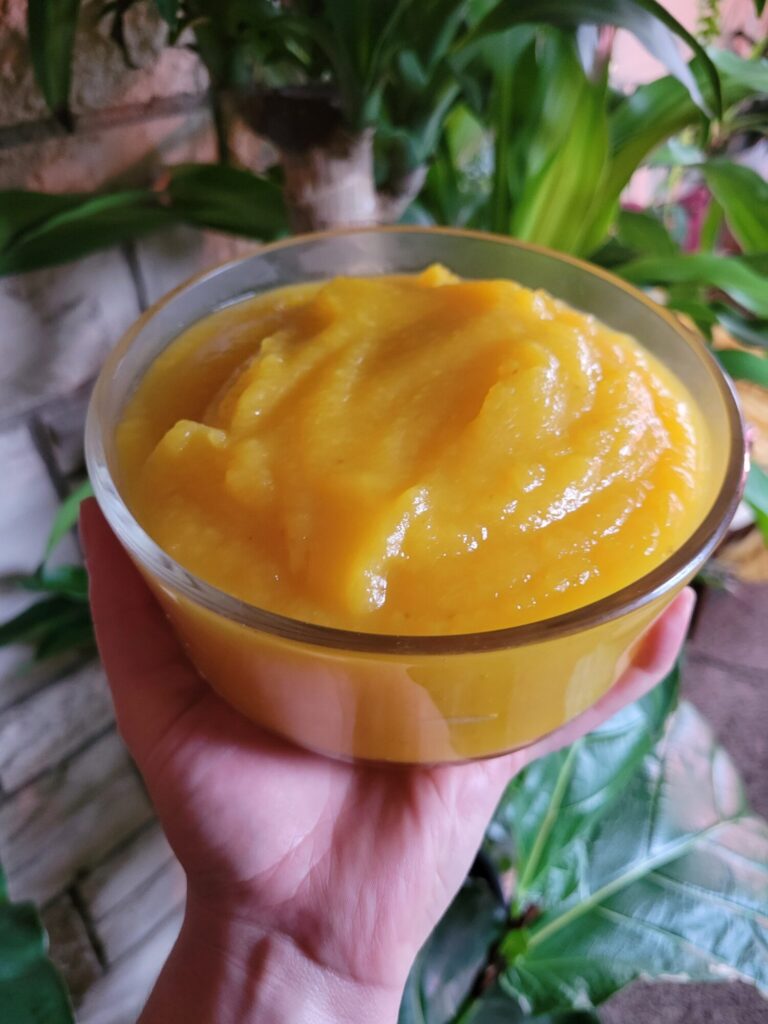
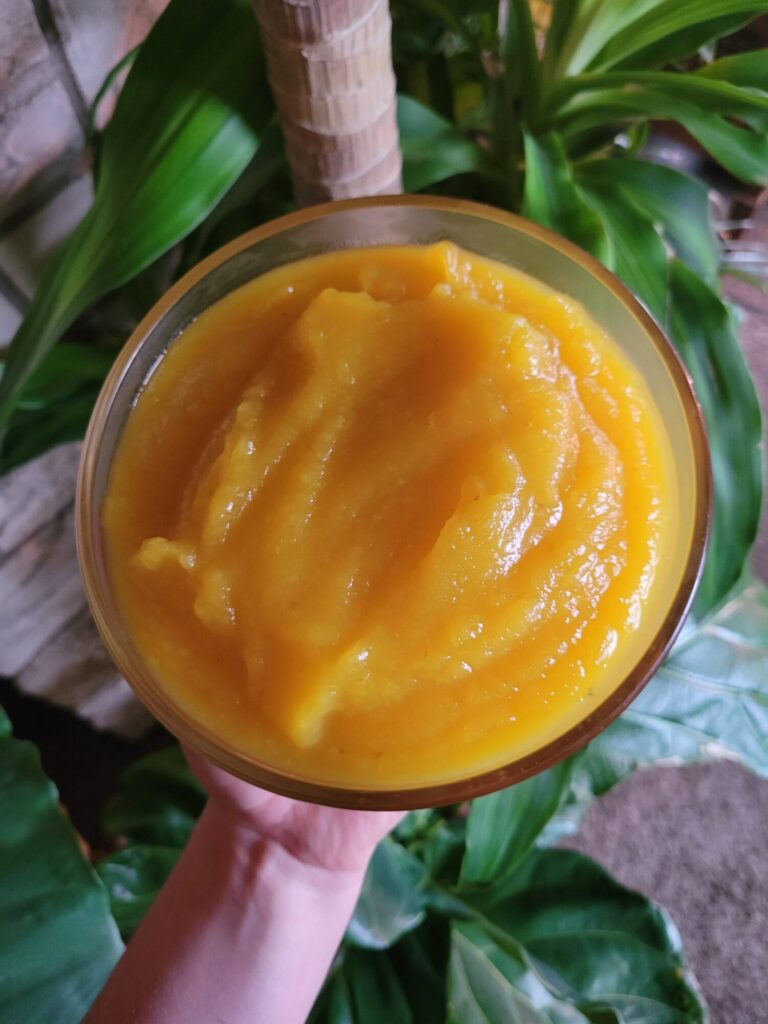
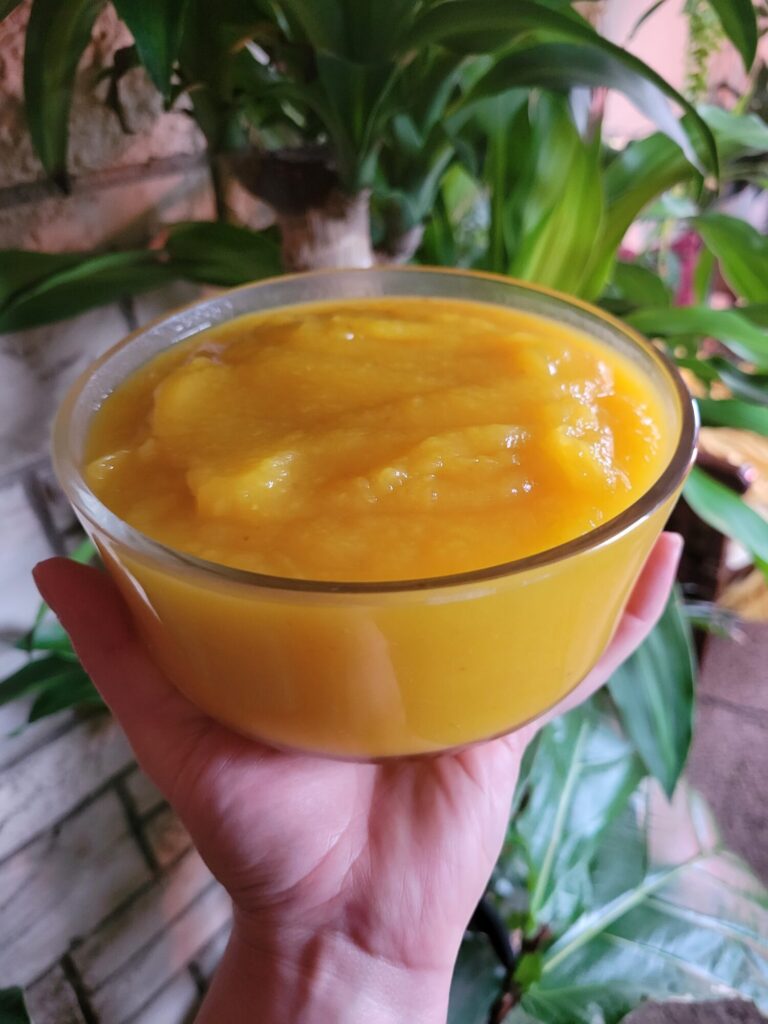
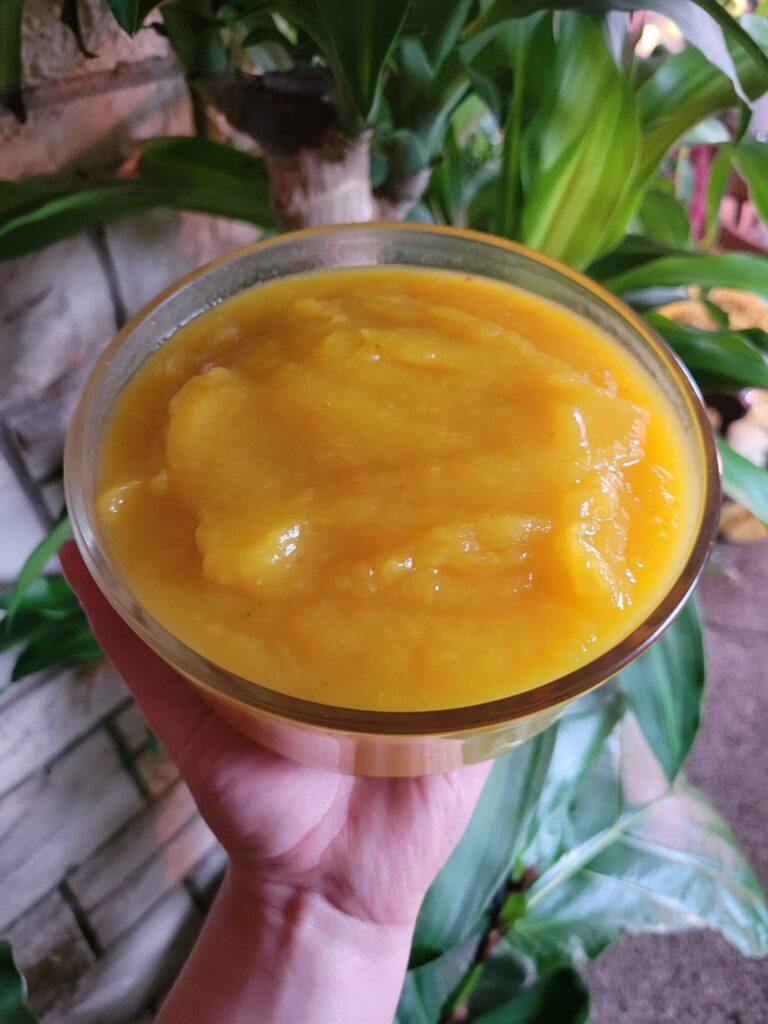
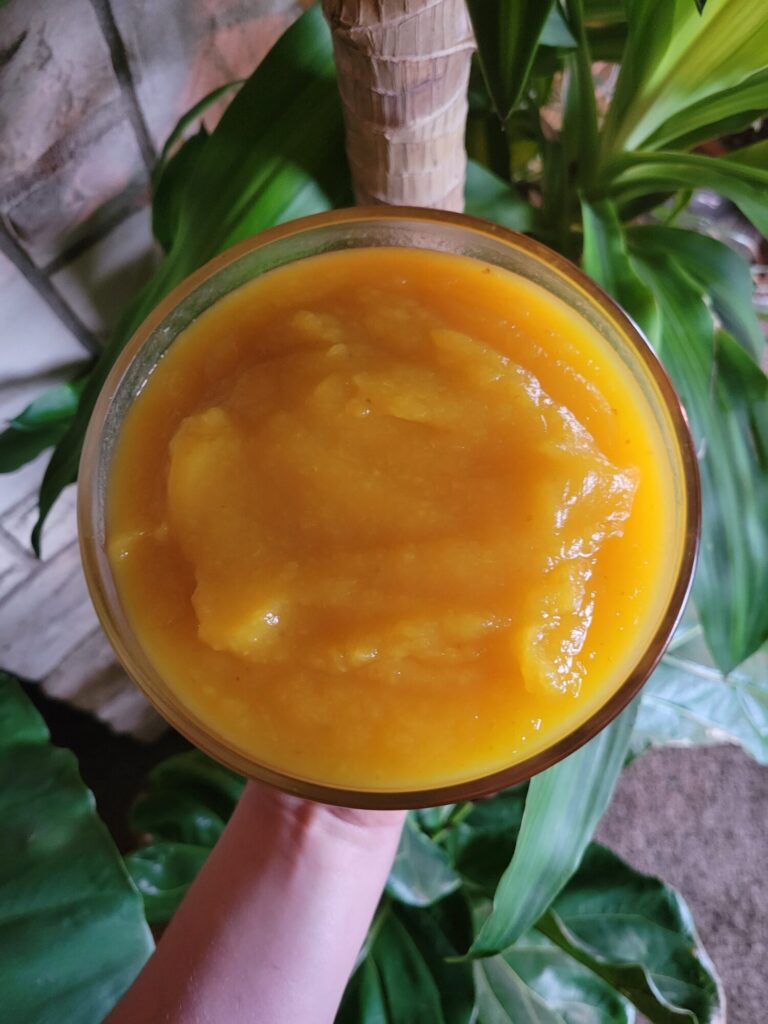
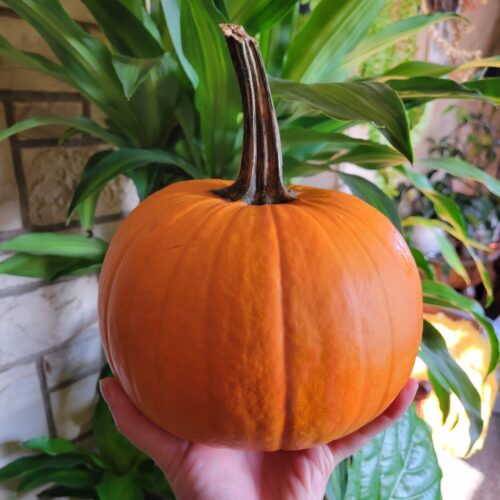
The Fundamentals of Roasting Pumpkins, Squash, & Other Gourds
Equipment
- Spoon
- Baking Sheet
- Aluminum Foil
- Oven
- Food Processor
Ingredients
- 1 pie pumpkin (or similarly sized gourd)
- 2 cloves garlic (optional)
- 1/2 shallot (optional)
- 1 jalapeño (optional)
- dash salt (optional)
- dash pepper (optional)
Instructions
Roast
- Preheat oven to 350 degrees Fahrenheit.
- Cut pumpkin in half and remove stem.
- Using a spoon, scoop out the innards to remove all of the seeds and stringy pieces. Reserve the seeds if you want to roast them for a fun snack.The "guts" are still edible, but can be texturally unpleasant. I will usually keep them to puree into soup or pet food. However, most people will discard them! Just make sure not to toss any seeds!
- Once you've cut in half and removed the innards from the pumpkin, wrap in aluminum foil and place on a baking sheet.I do this by getting a piece of foil long enough to wrap around the entire pumpkin. Place pumpkin face down in the center of the foil. Then, wrap the edges of the foil around to cover the pumpkin completely.
- Bake for 45 minutes to 1 1/2 hours, depending on size. Make sure to flip halfway through so that the pumpkin sides are face up.The size of the pumpkin can drastically increase the cook time. Pie pumpkins and butternut squash tend to weigh around 3-5 pounds. Gourds on the smaller end, will typically roast in about 45 minutes. Ones on thee higher end, tend to take a little bit longer. The best thing to do is to cook them for 45 minutes and then check them every 5-10 minutes after that until they’re cooked throughout.With larger or denser gourds, like a Calabaza or Ambercup, this can take more in the realm of 2 to 3 hours. In this case, you can also increase the cooking temperature to 400 degrees for a slightly quicker bake.
- When the flesh is soft and you can poke it with a fork without any resistance, remove from the oven. At this point it should vaguely resemble the consistency of a baked or boiled potato.
- Let cool to the touch or place in the refrigerator or freezer until it reaches a manageable temperature.Just make sure that it doesn't freeze! Because crystalizing can disrupt the texture of the purée.
Purée
- Remove skin and add pumpkin to the food processor. It should peel off easily. If you like, you can get every bit of pumpkin out of it by scooping the remaining pumpkin out with a spoon.
- This is the point where you should spice the pumpkin if you like. I usually don't for a sweet pumpkin recipe or if I don't know what I'm going to do with it. Mostly because they're a delicate flavor and you don't want to overwhelm the natural flavor! Pumpkins are naturally sweet and, when you put them to a dessert that already has copious amounts of sugar in it, adding any sugar or other spices at this point could throw off the flavor.Every now and then I might add salt, pepper, garlic, shallots, and maybe a hot pepper or two.For sweet, rather than savory, dishes, I'll sometimes toss in some nutmeg or vanilla extract. But, like I said, don't overdo it!
- Purée until smooth, about 30-60 seconds. Making sure to scrape down the sides occasionally.If you aren’t using a food processor, you can use a large mixing bowl and a fork, potato masher, or mixer to achieve a similar effect. I prefer a food processor, though, because it removes the stringiness that I find texturally unpleasant.If I'm going for a chunkier consistency, I'll cube the gourd before roasting with a little bit of oil, salt, and pepper so that it cooks in that shape.
Tips, Tricks, & Notes
- Don't forget to roast the seeds! I have an entire article on The Fundamentals of Roasted Pumpkin & Squash Seeds.
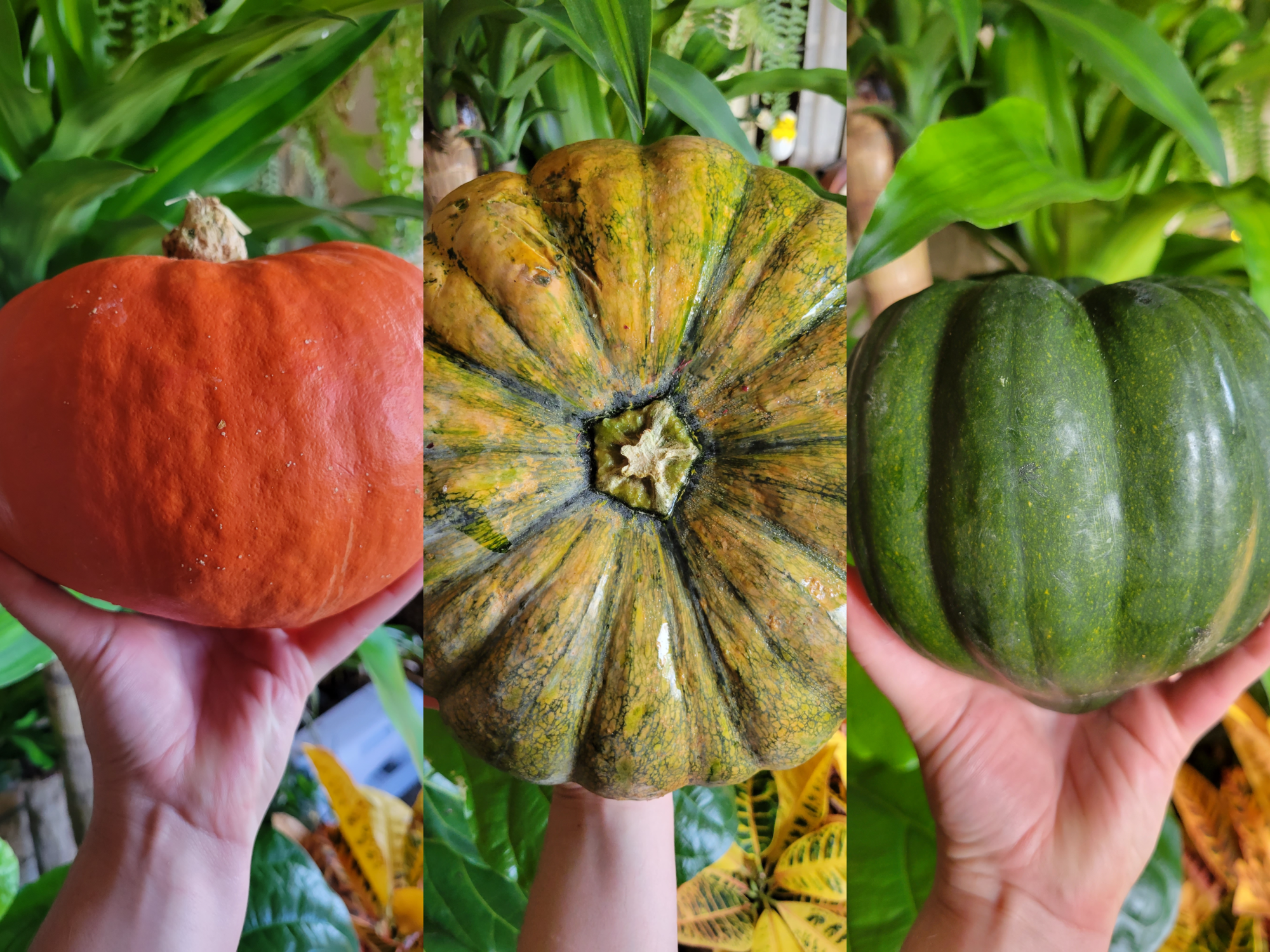
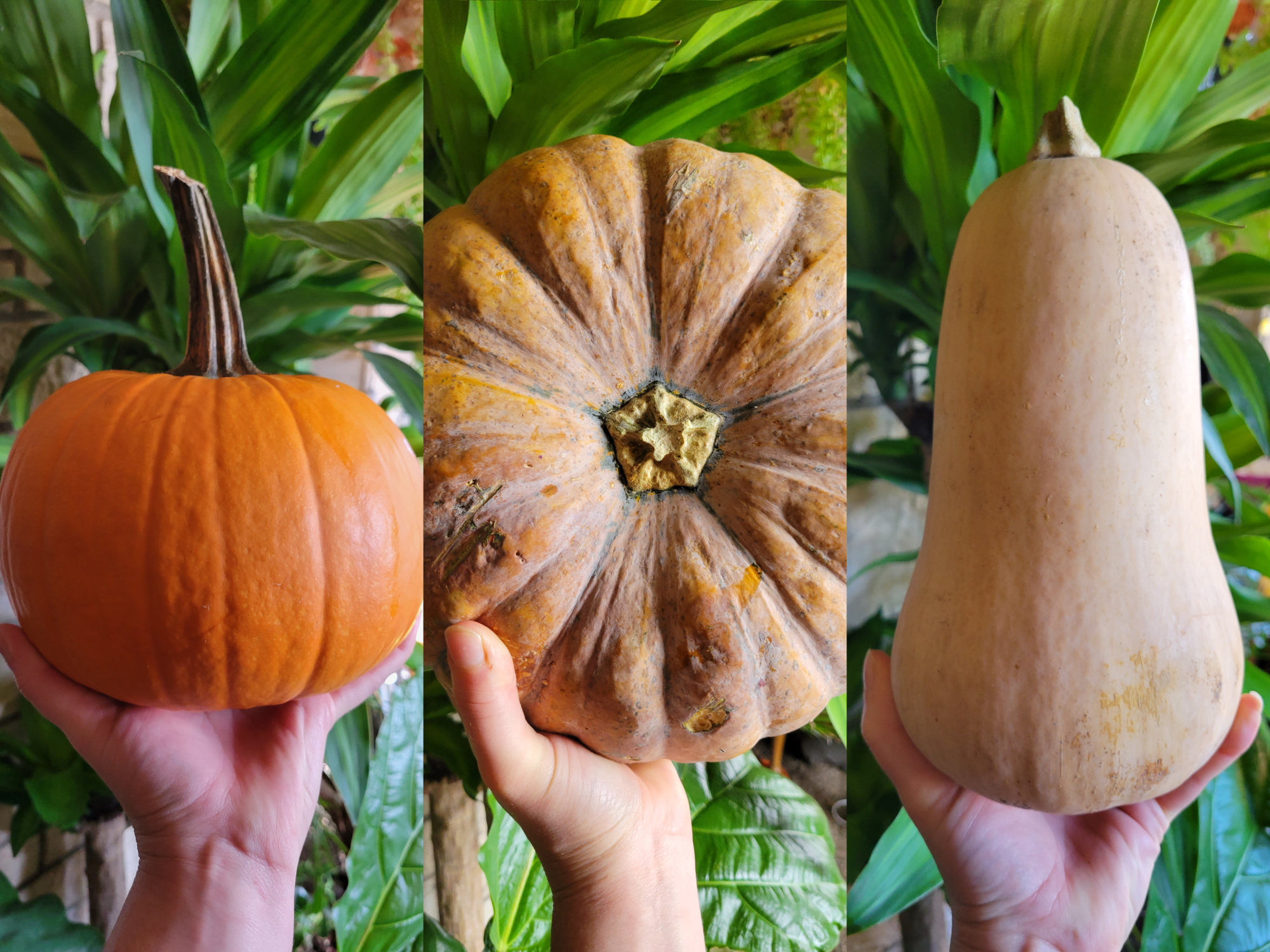
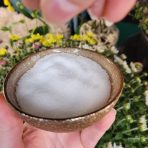
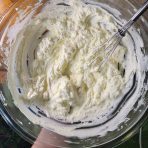
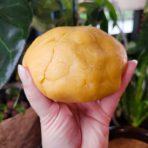
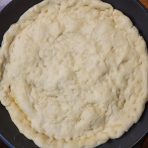
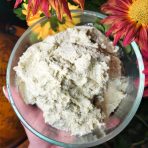
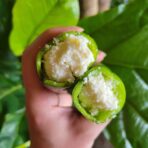
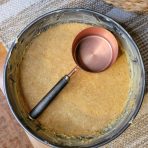
Leave a Reply